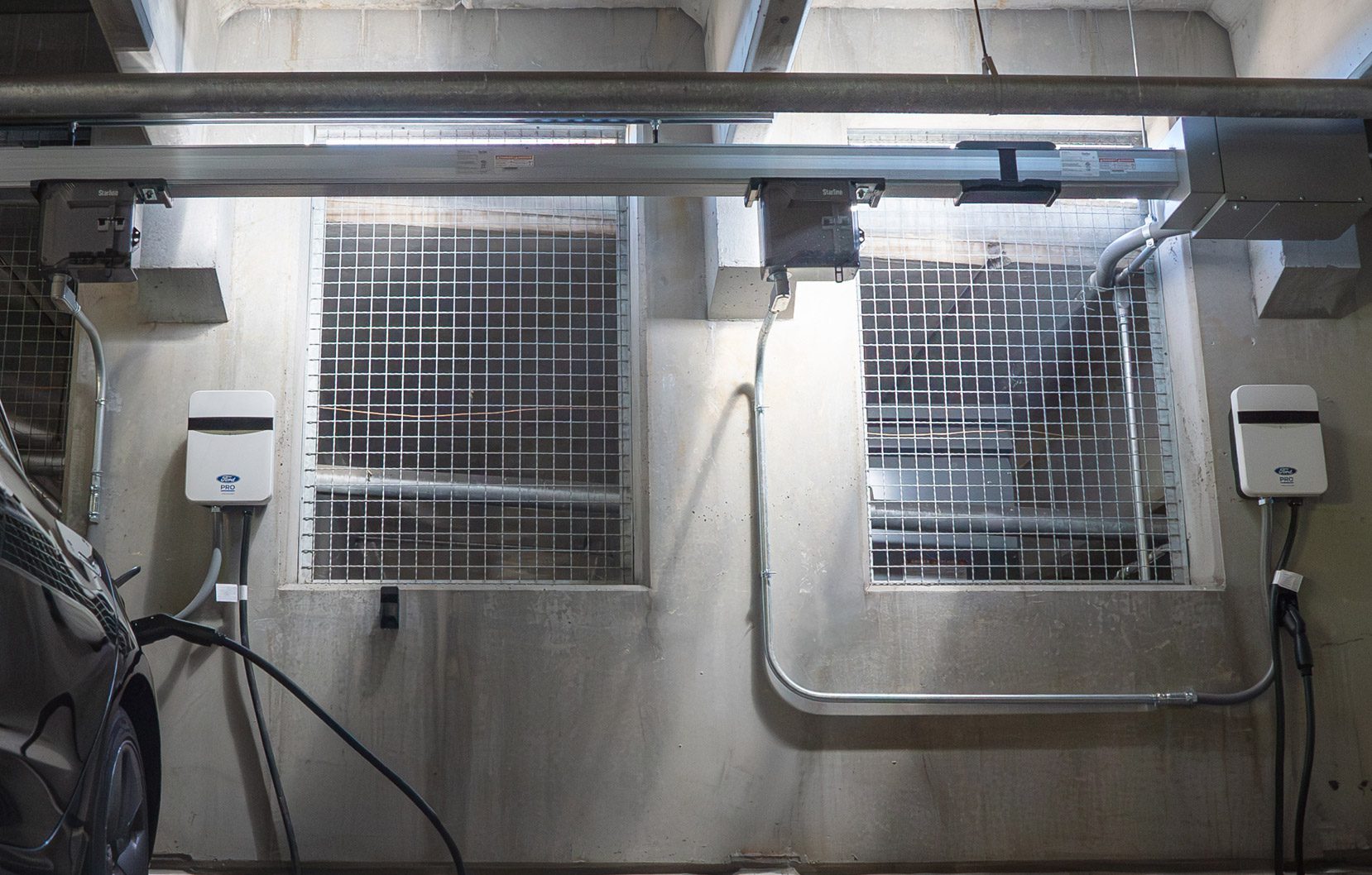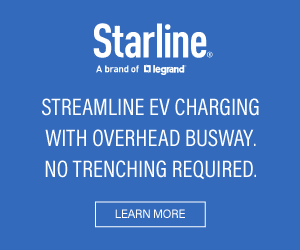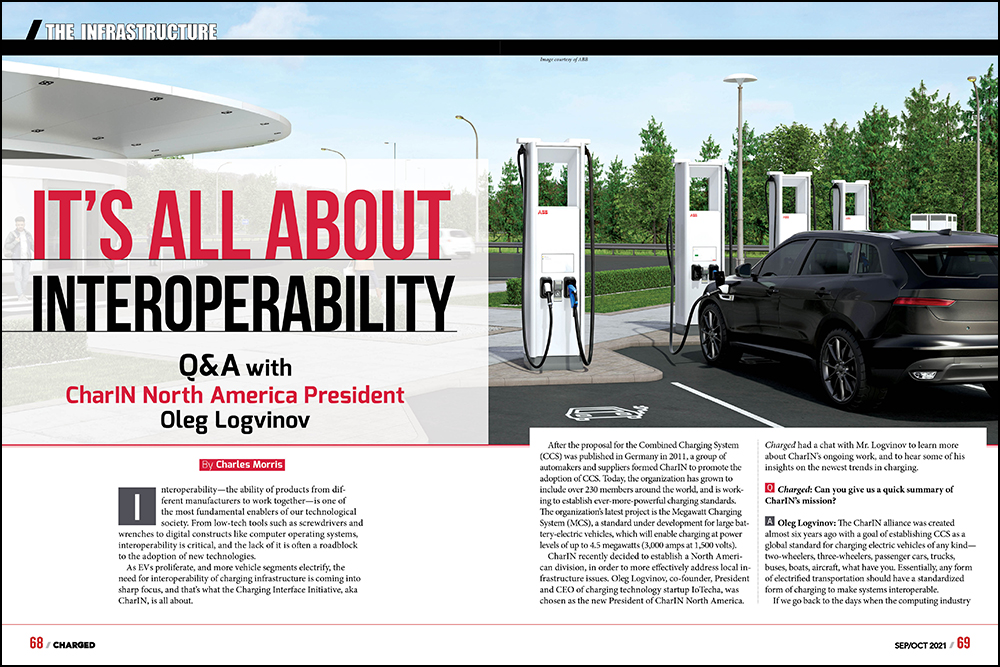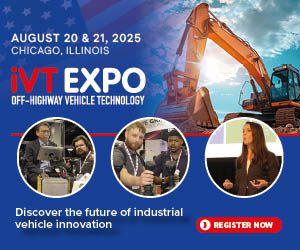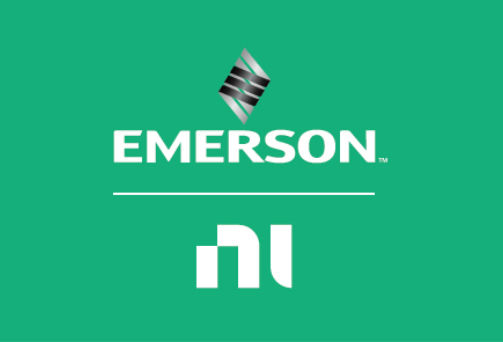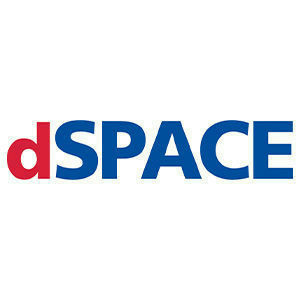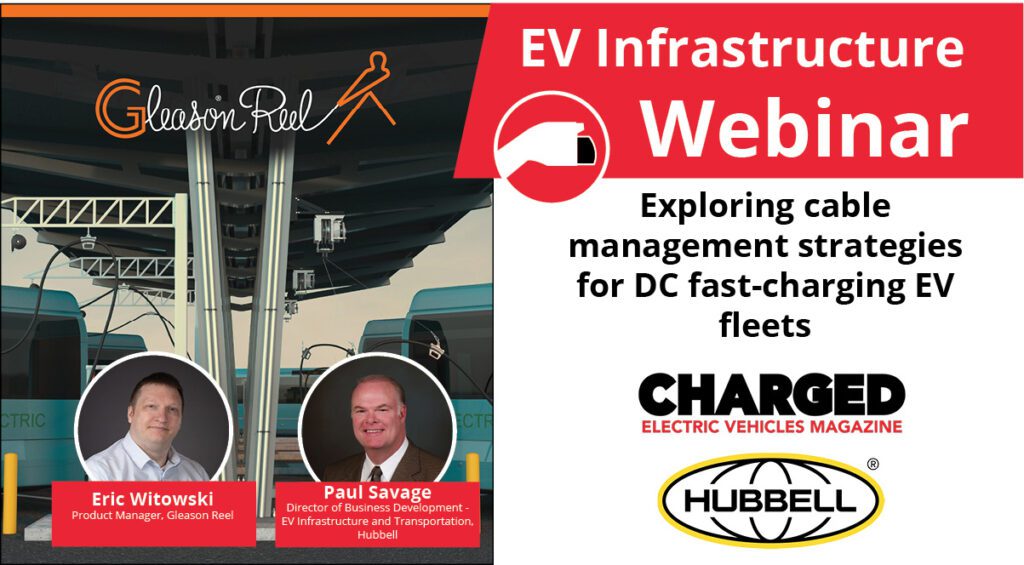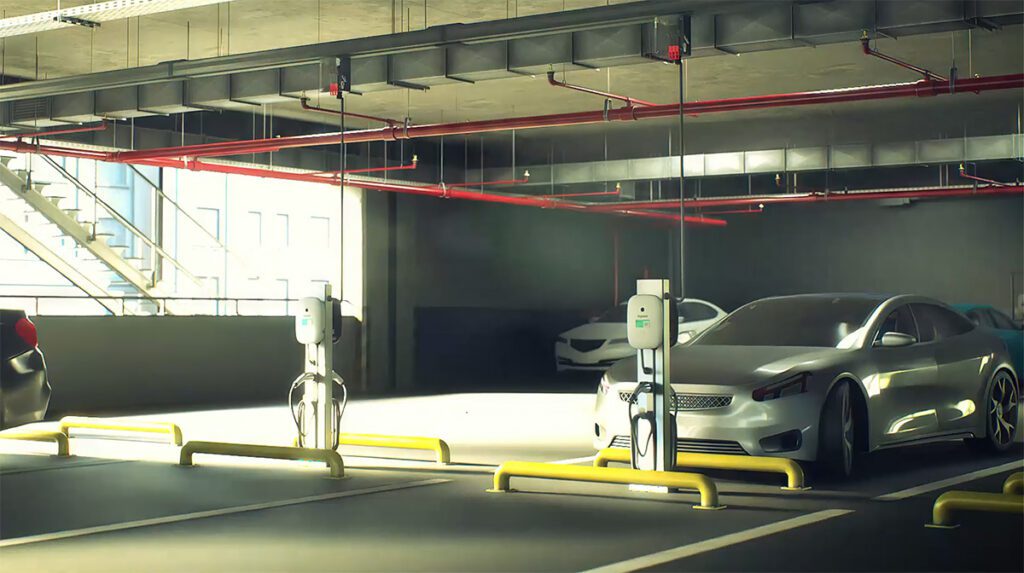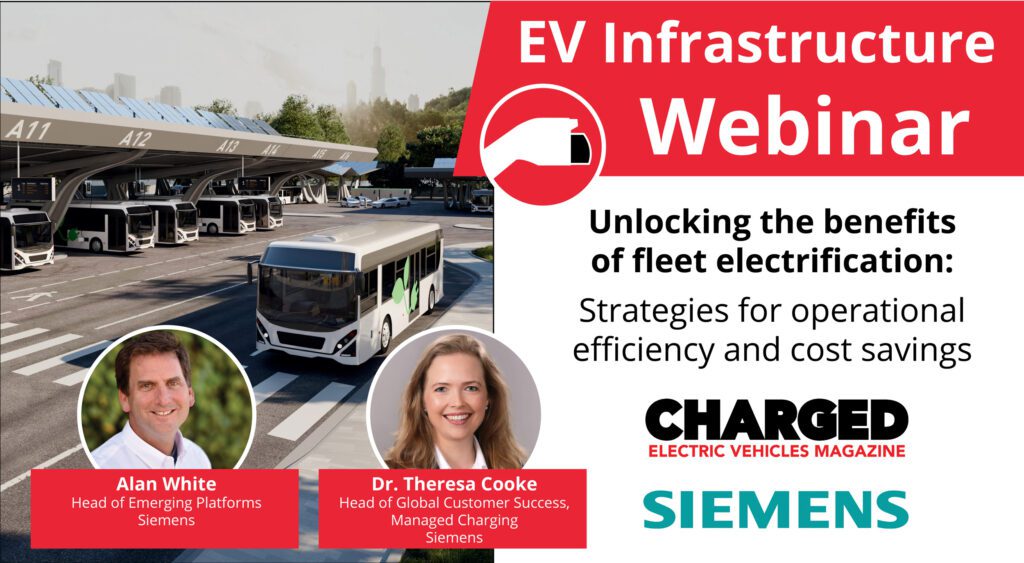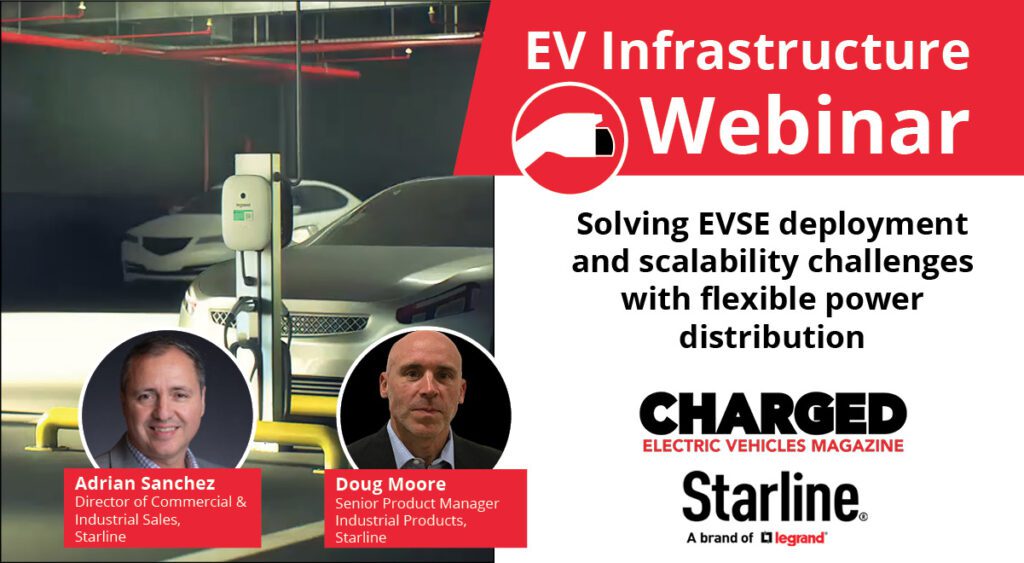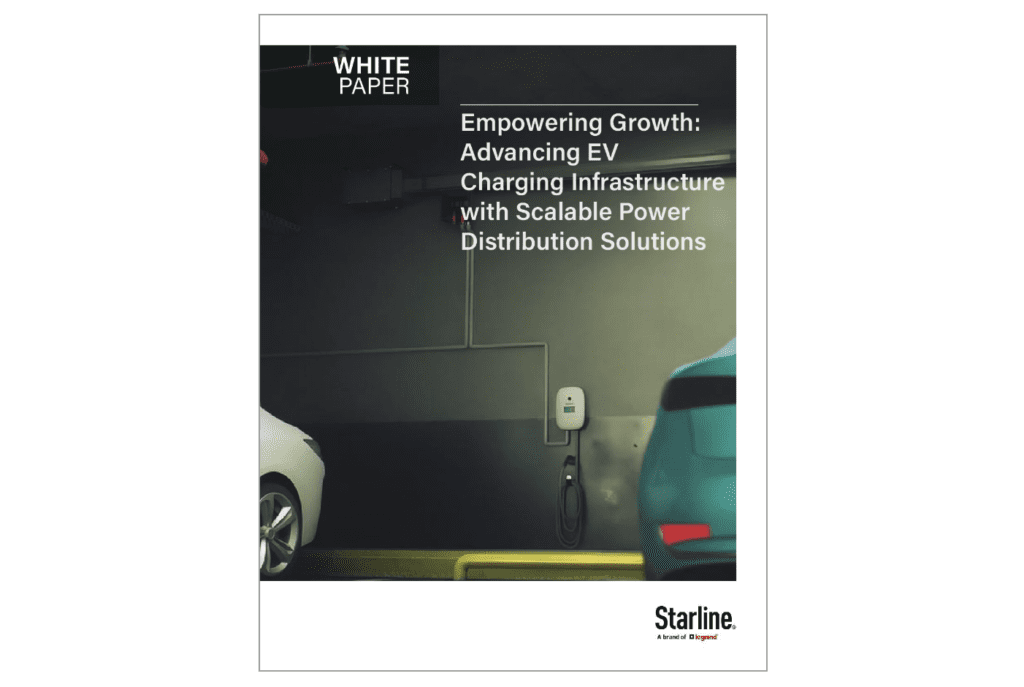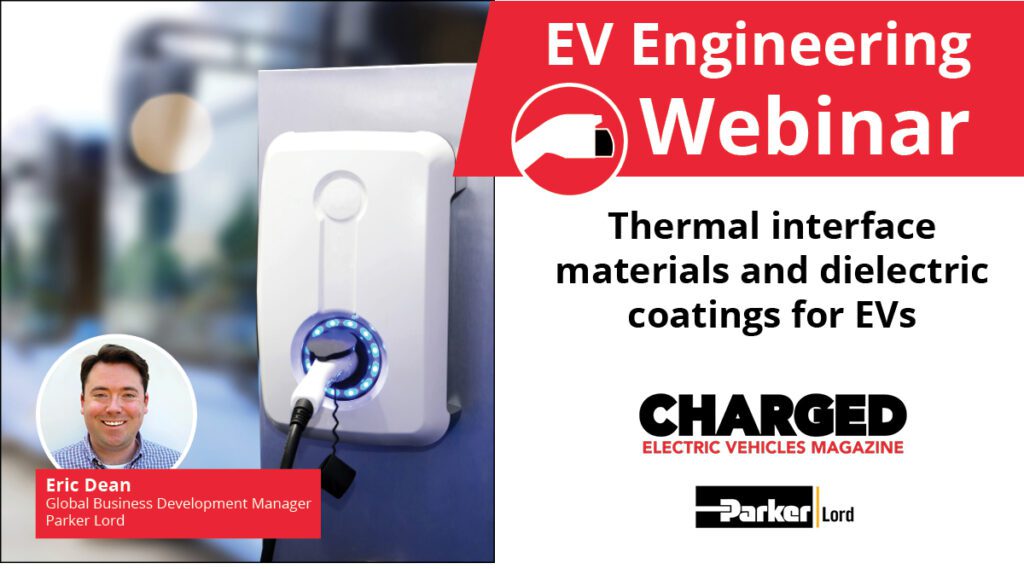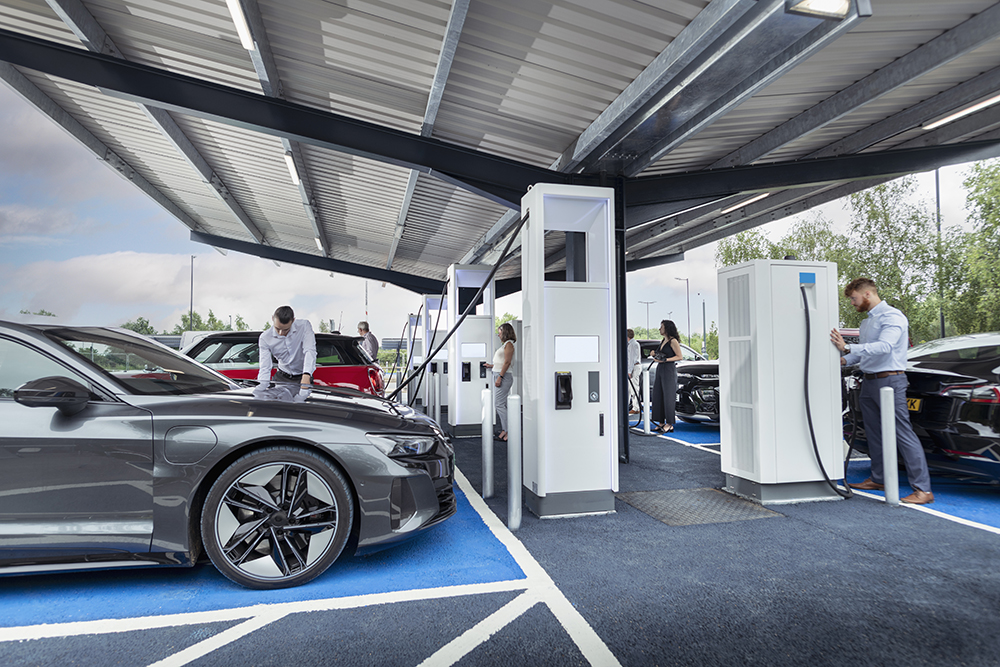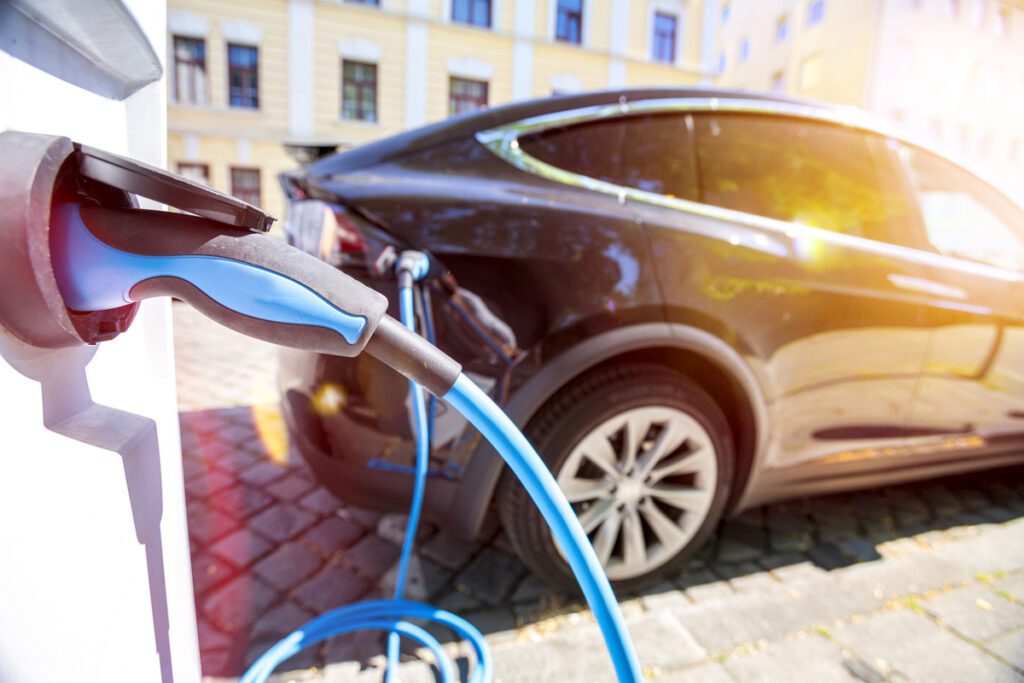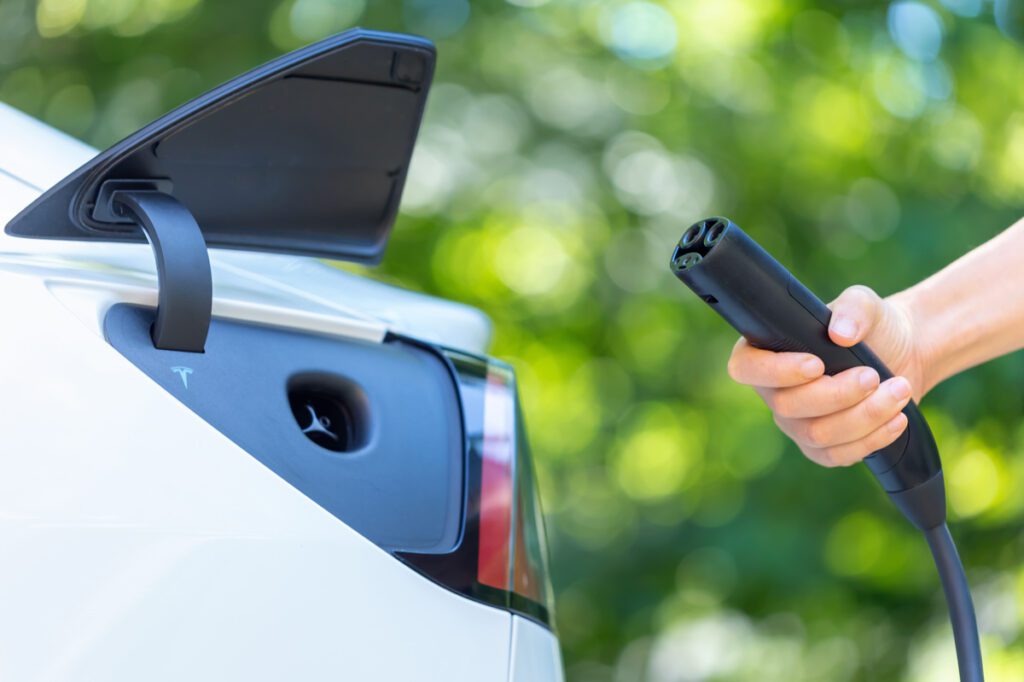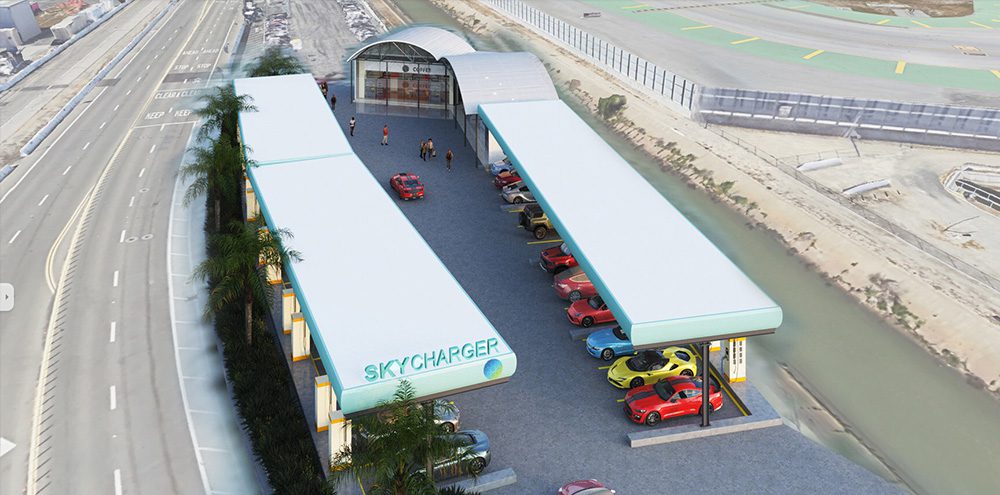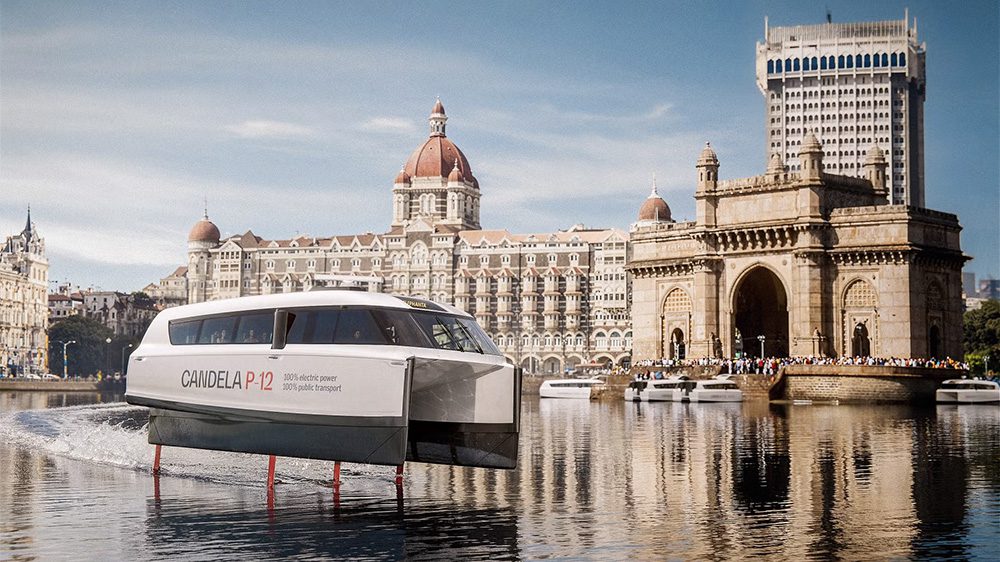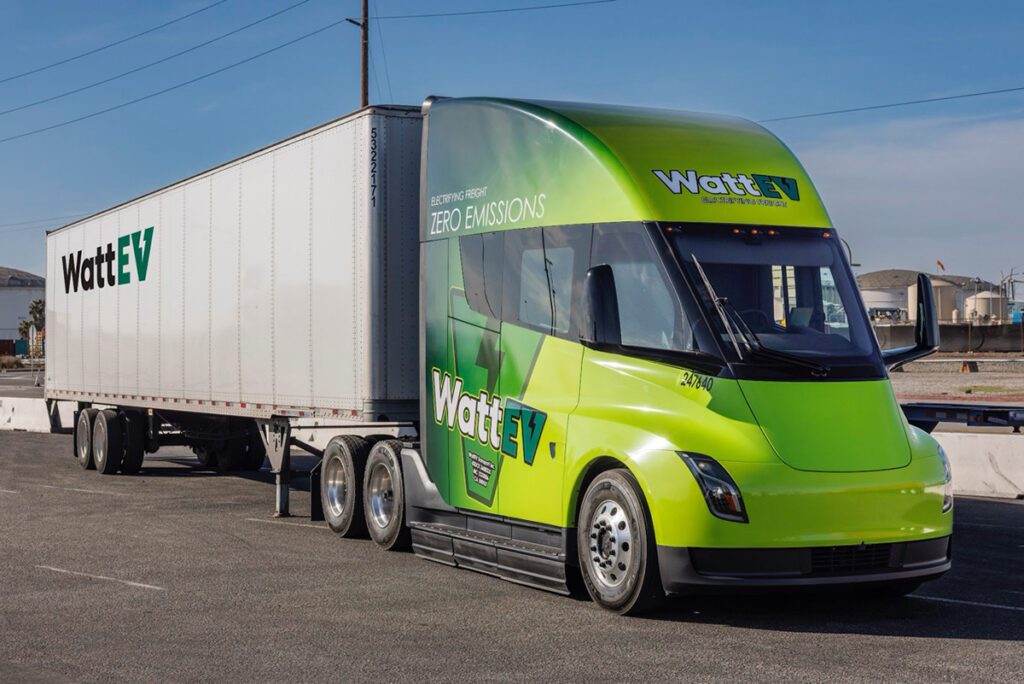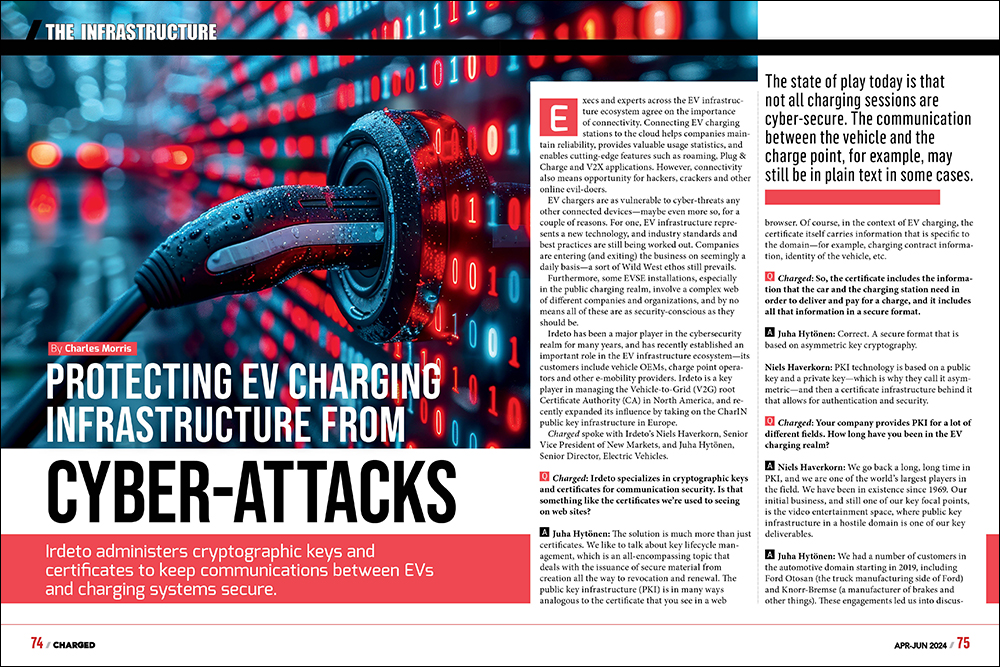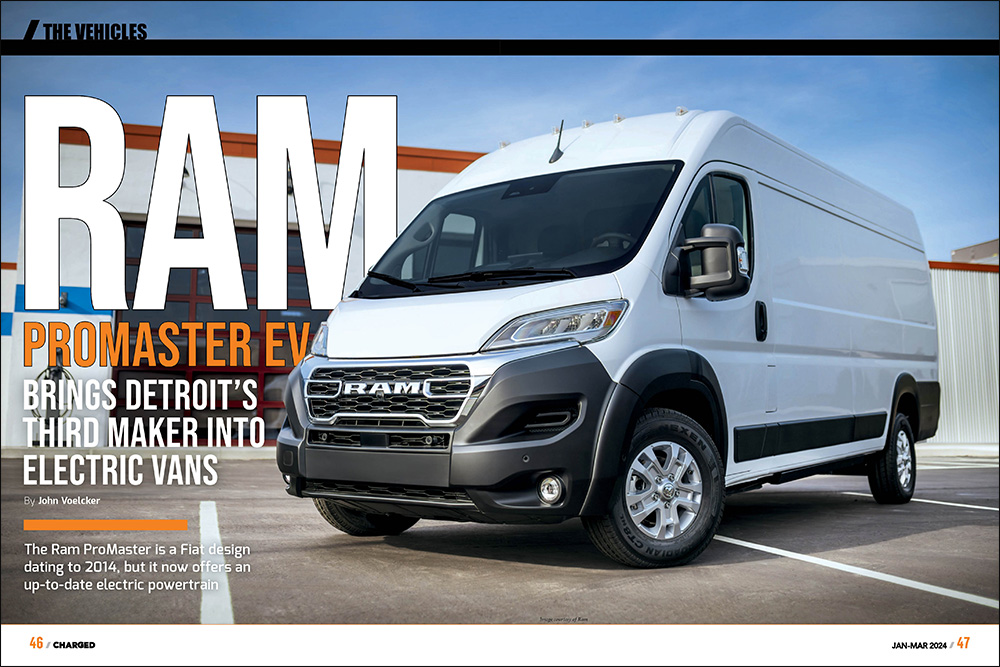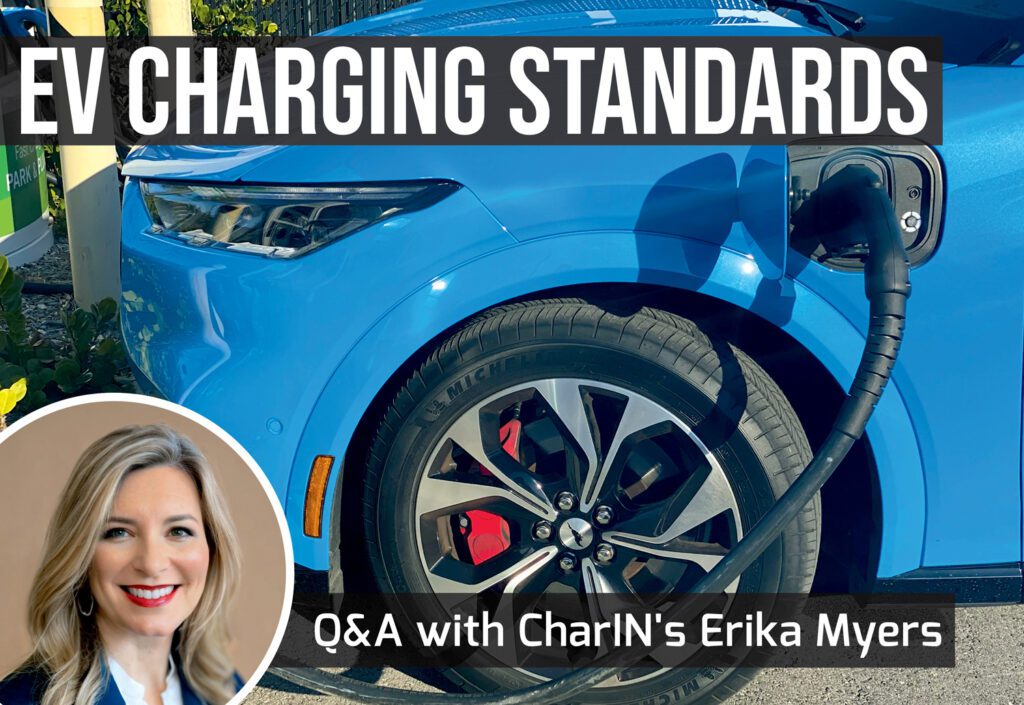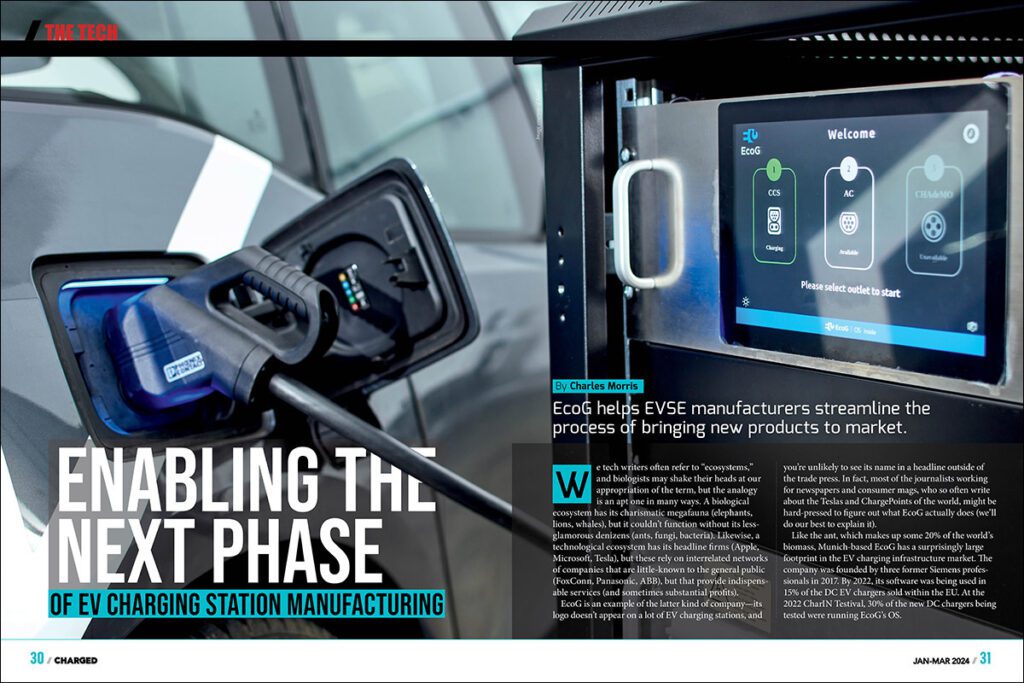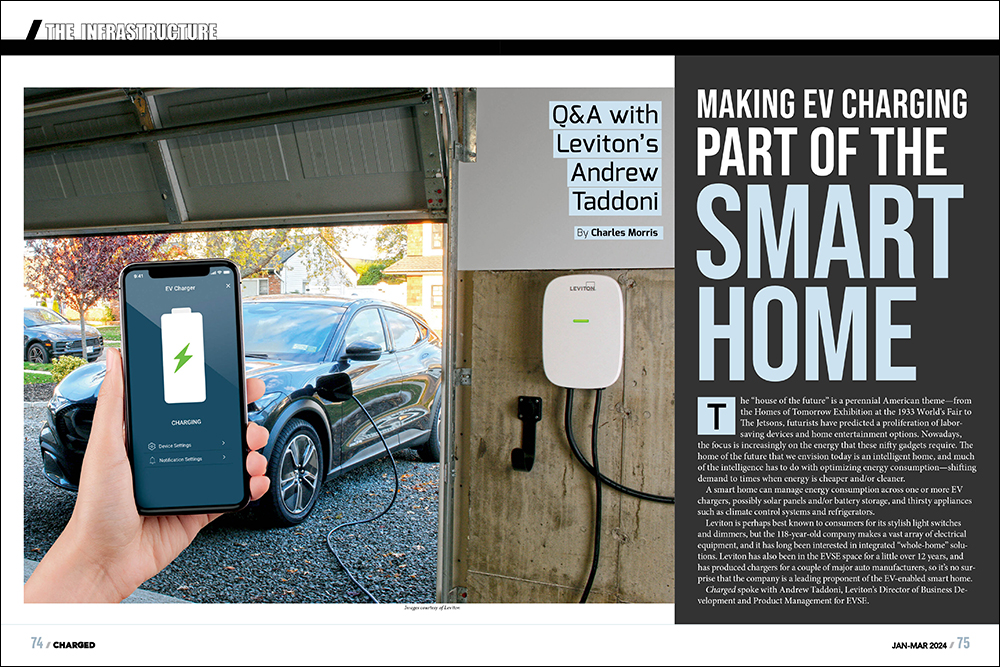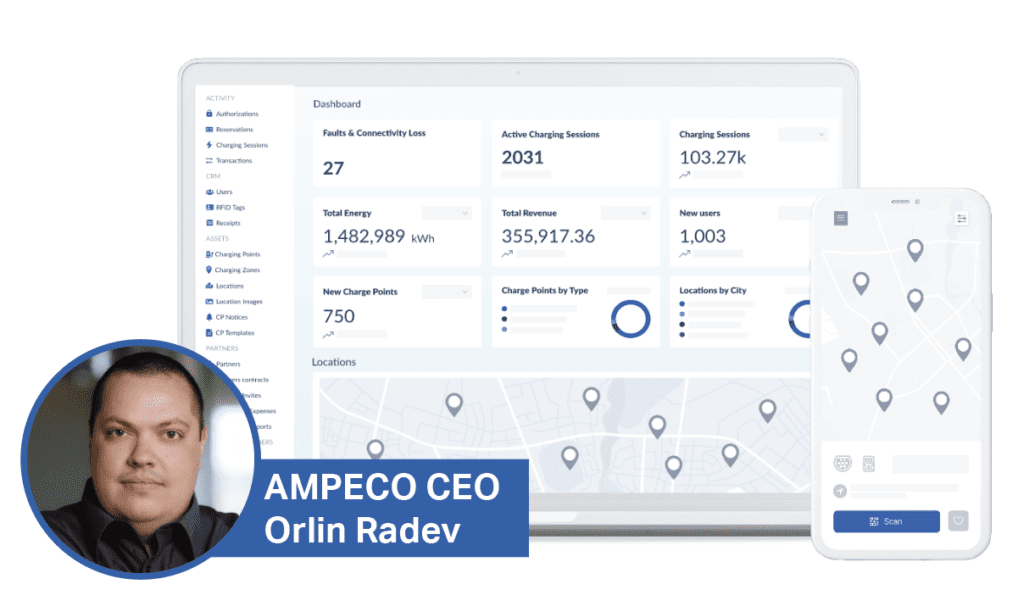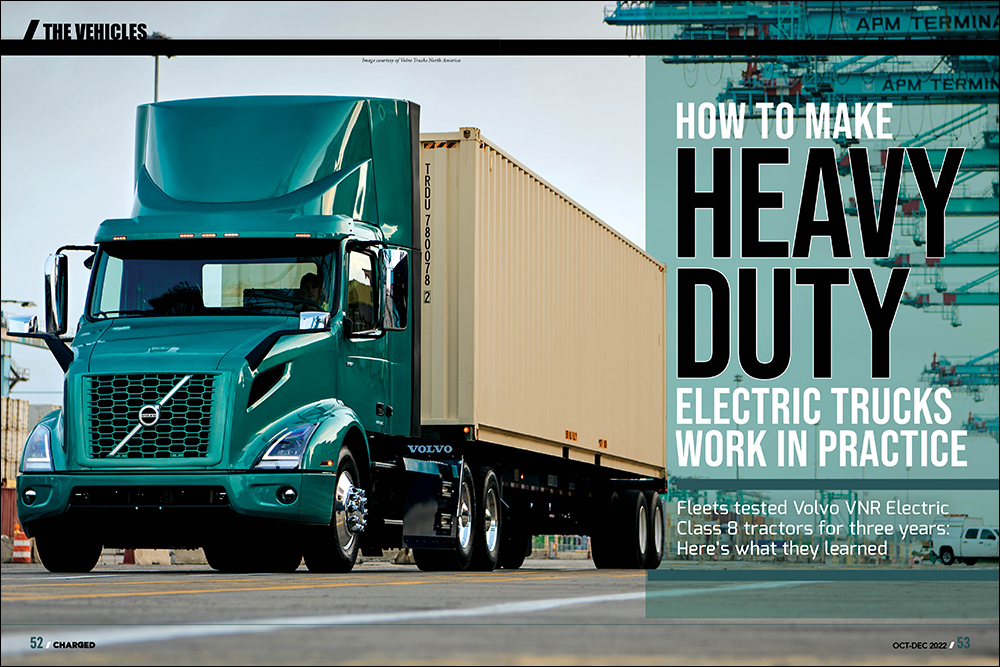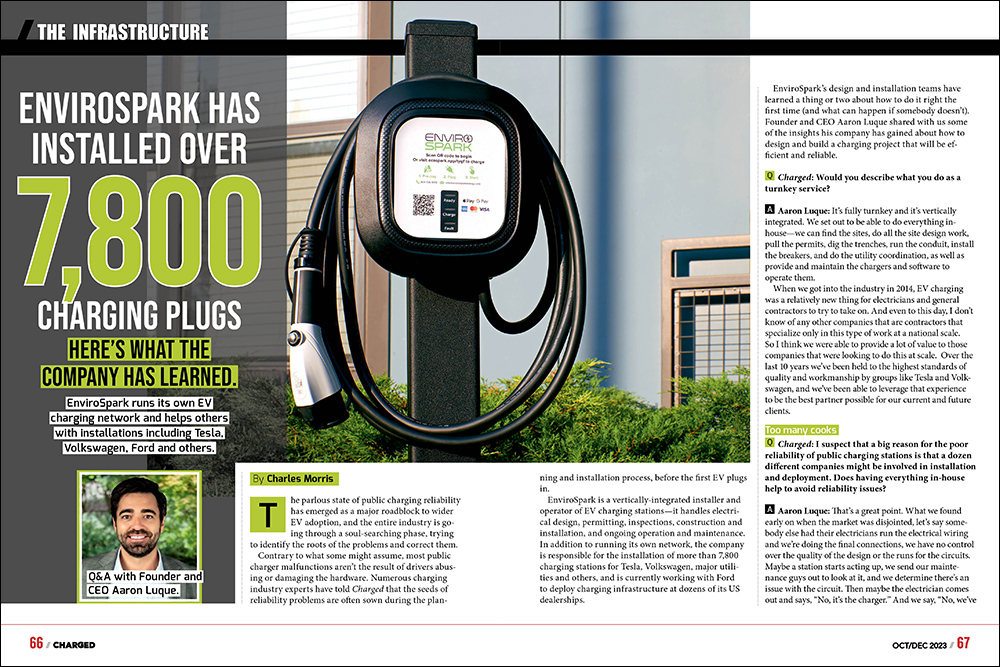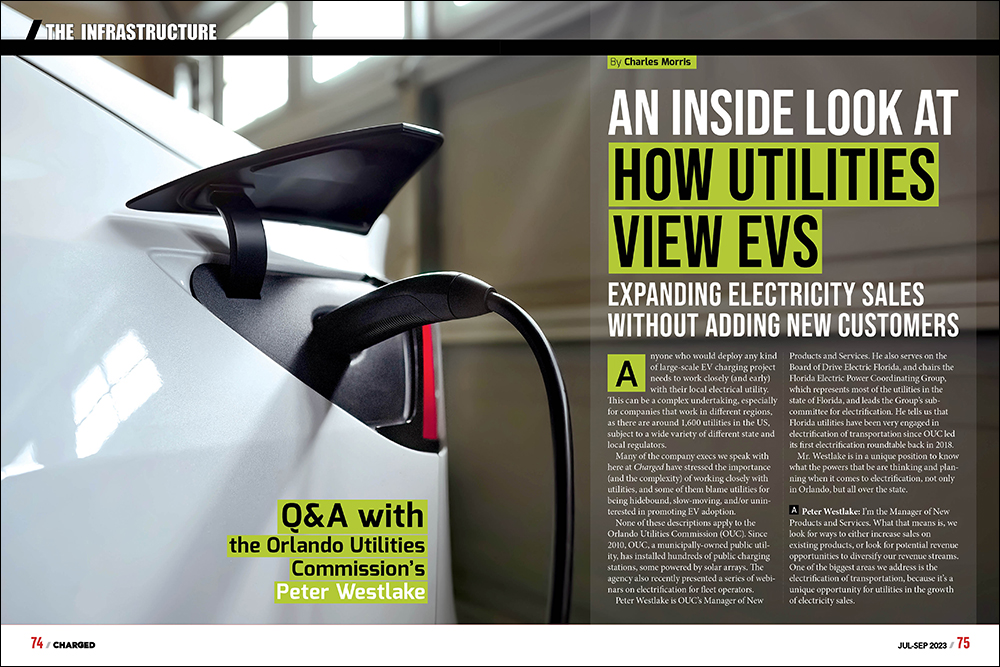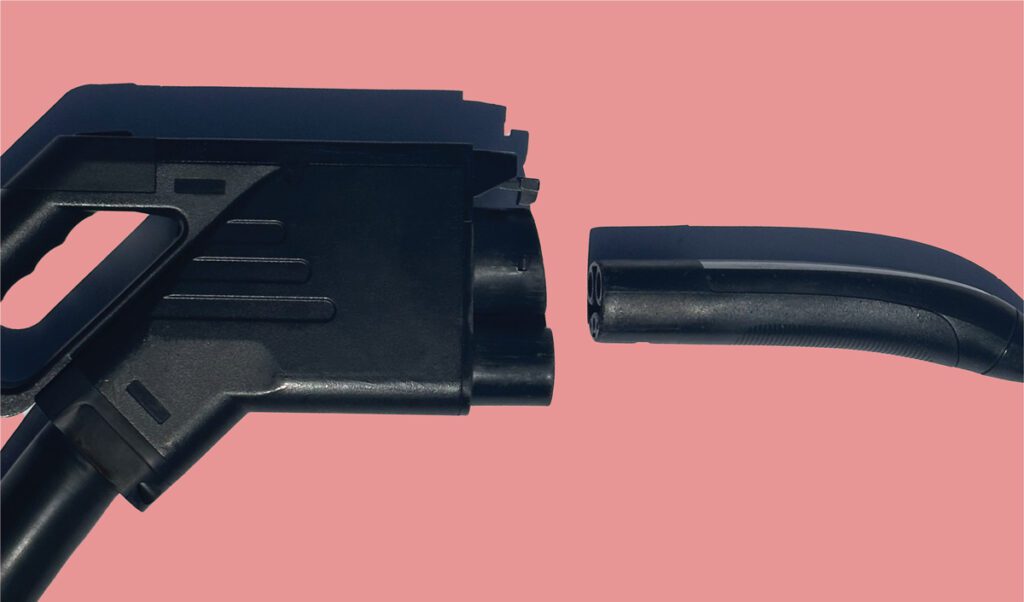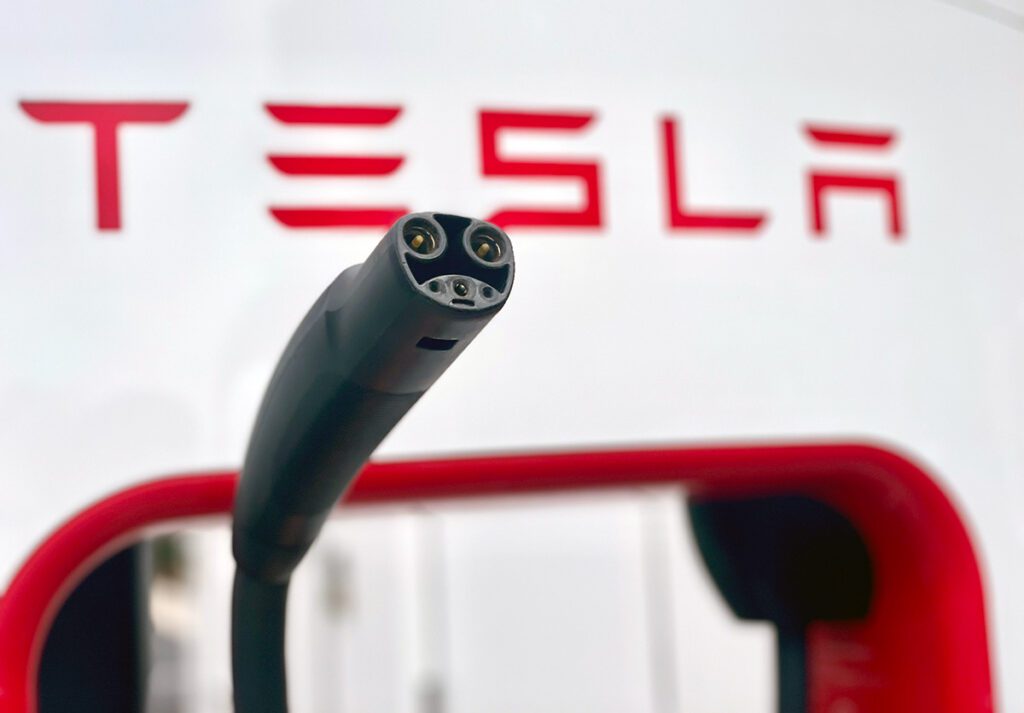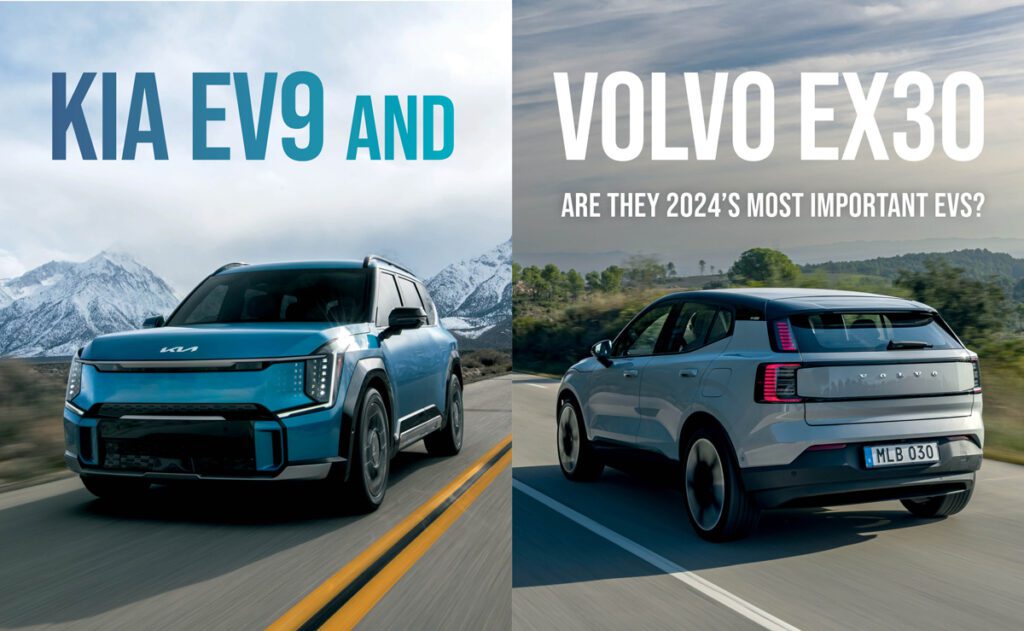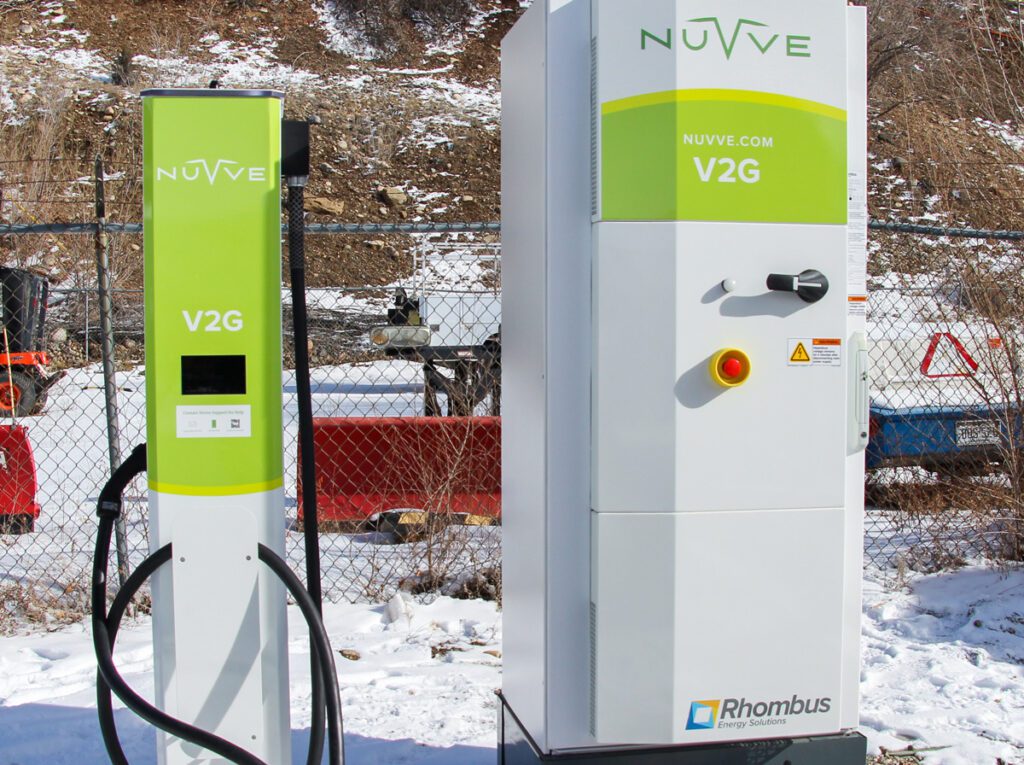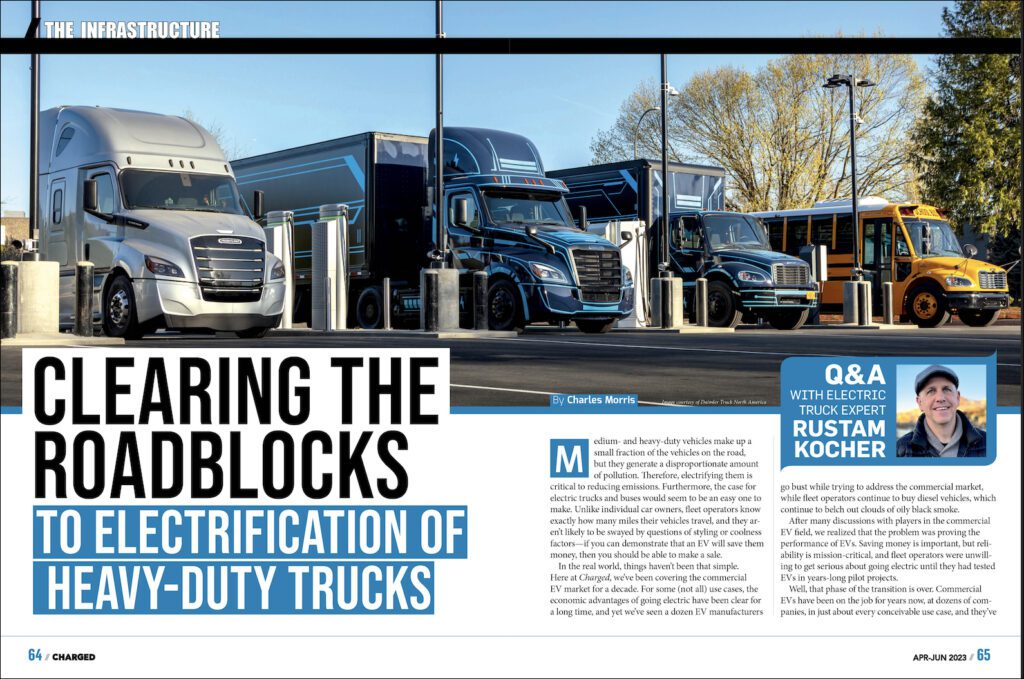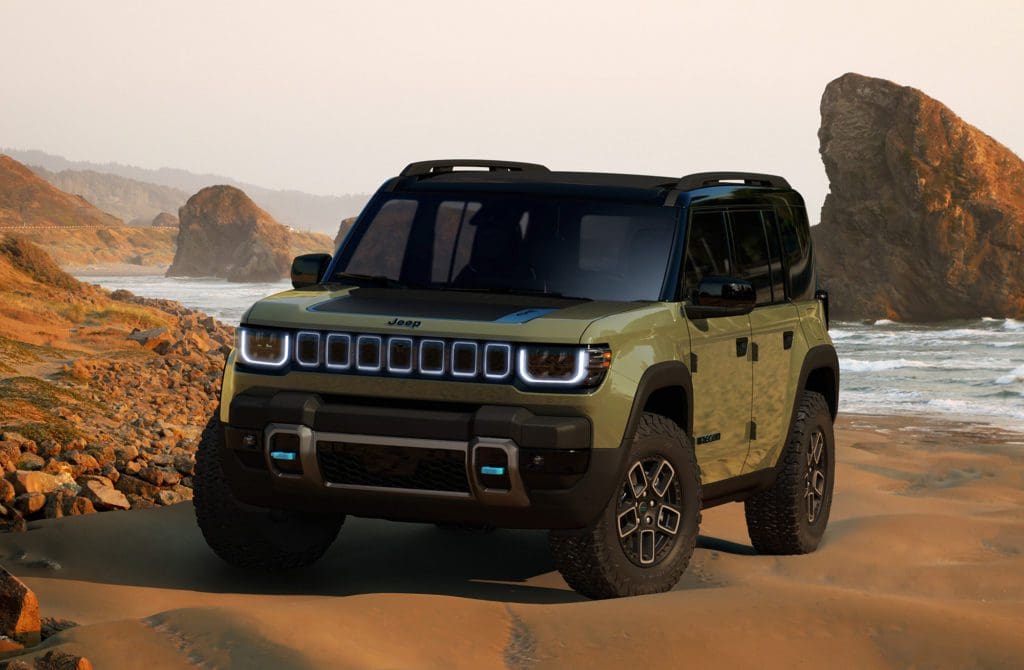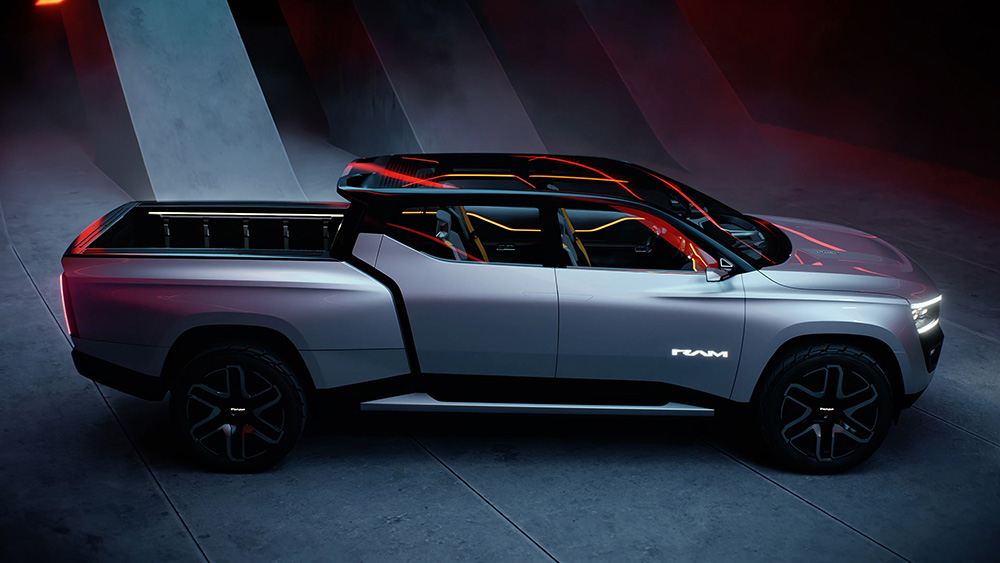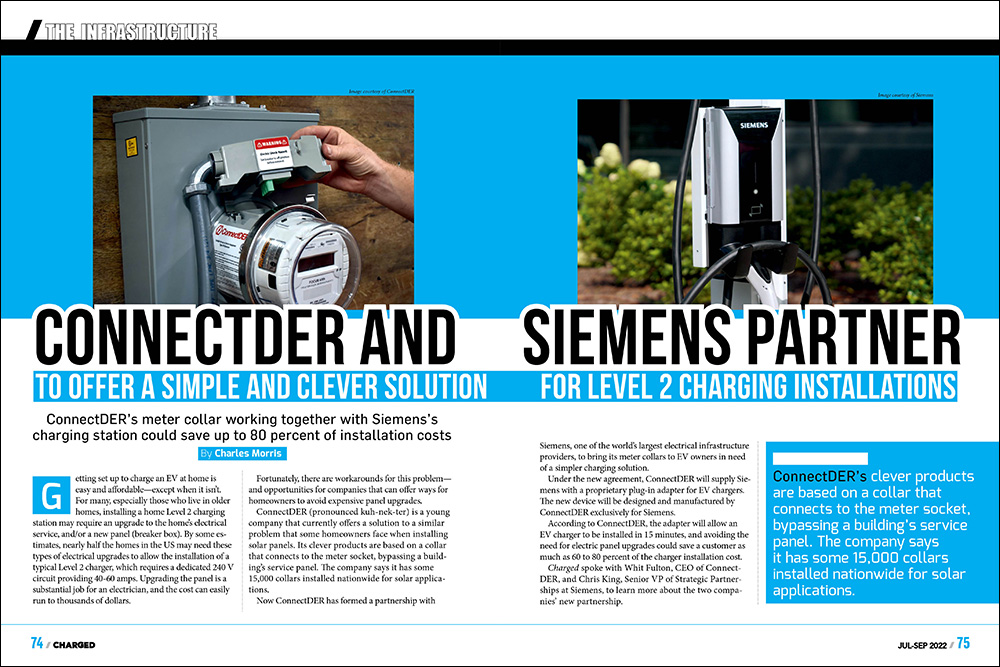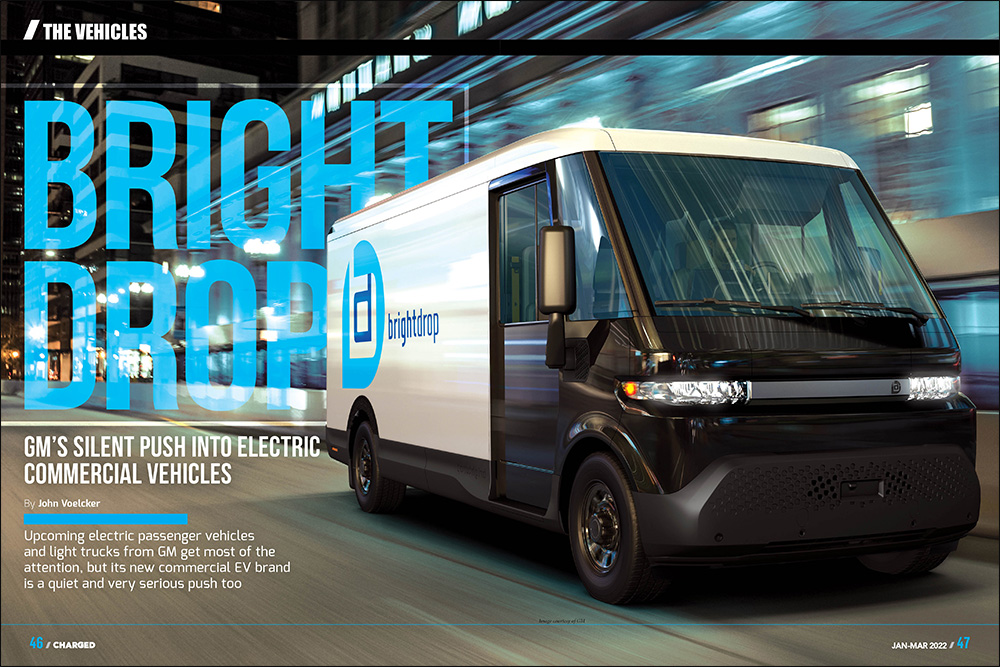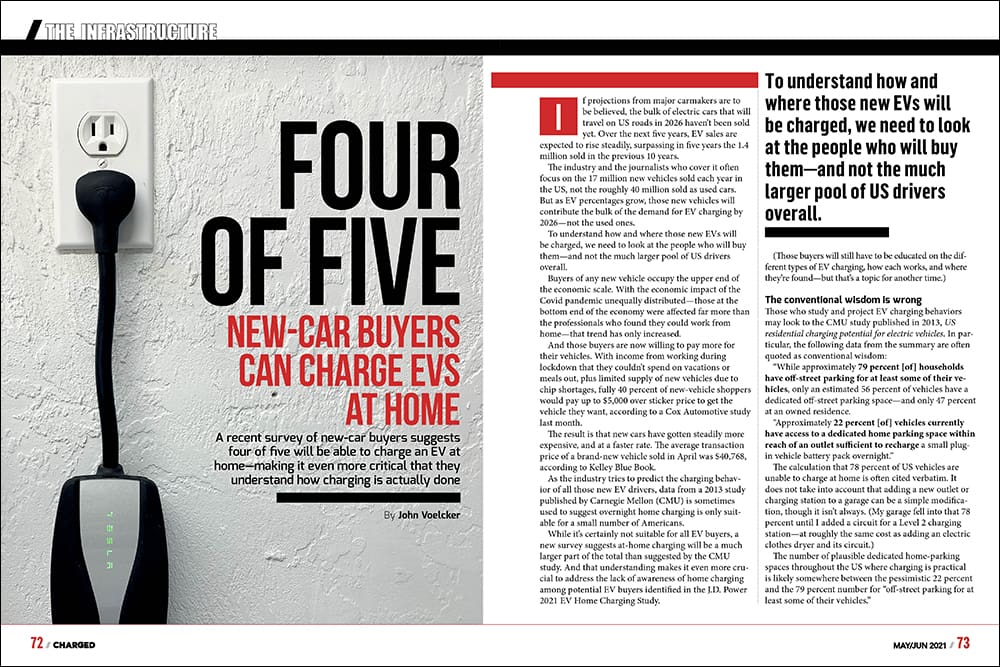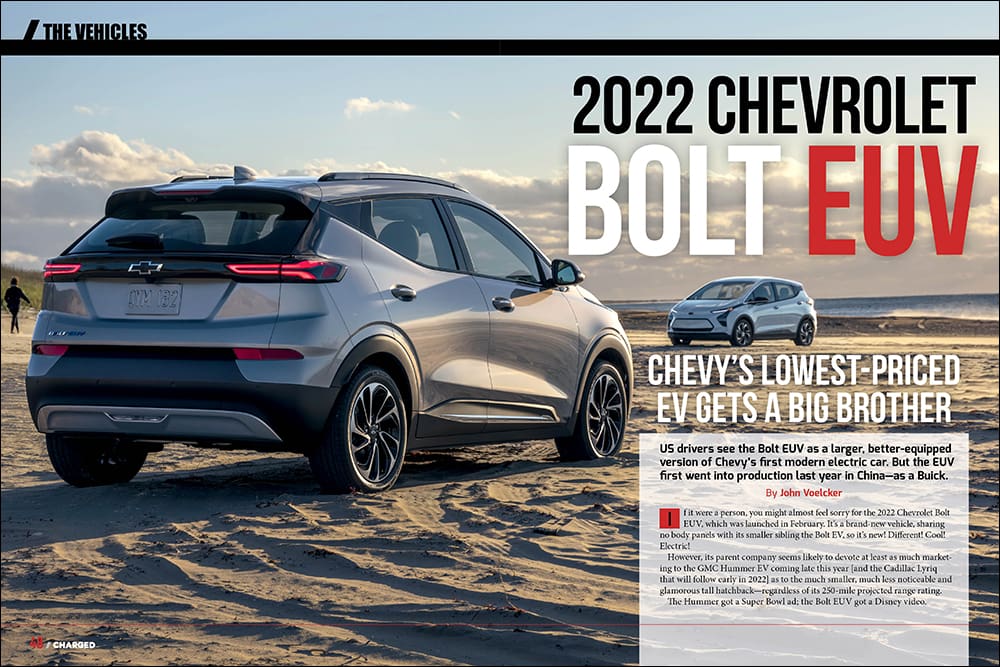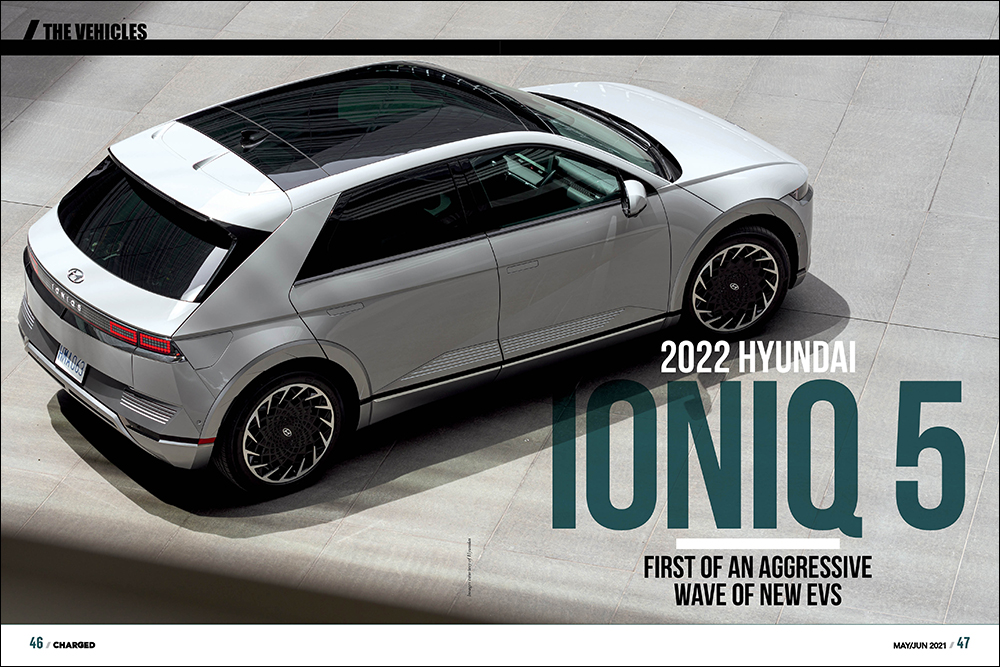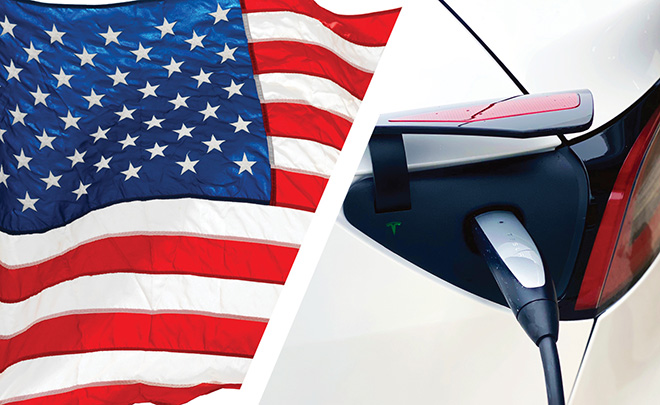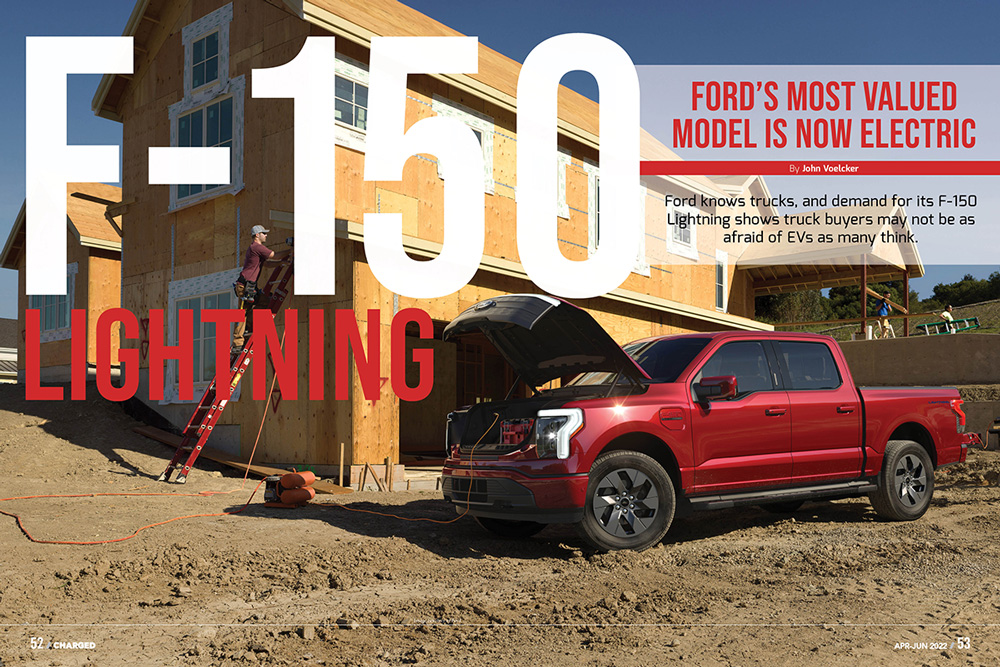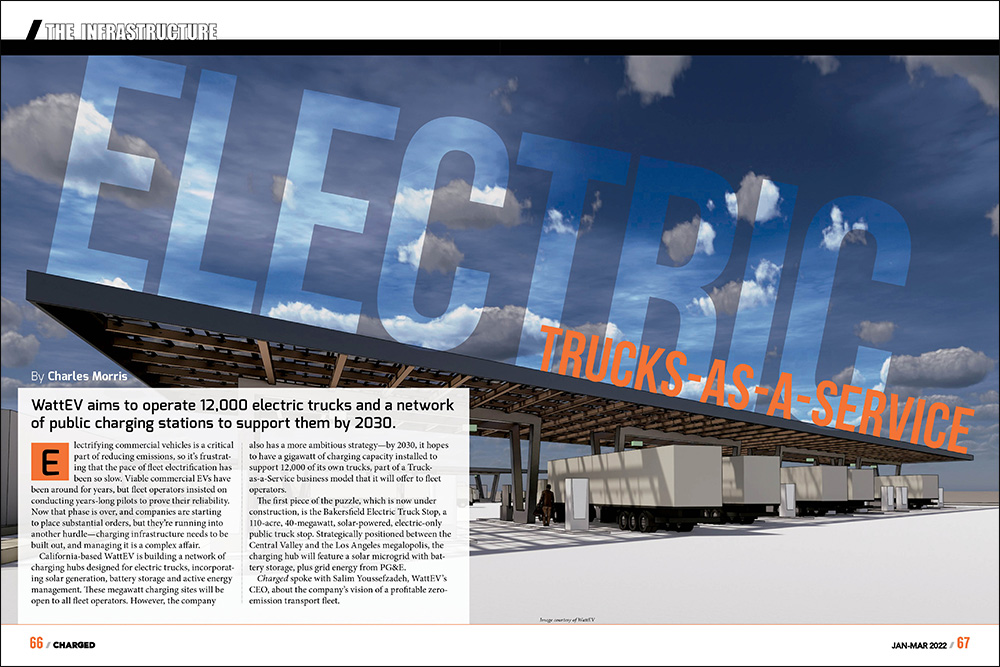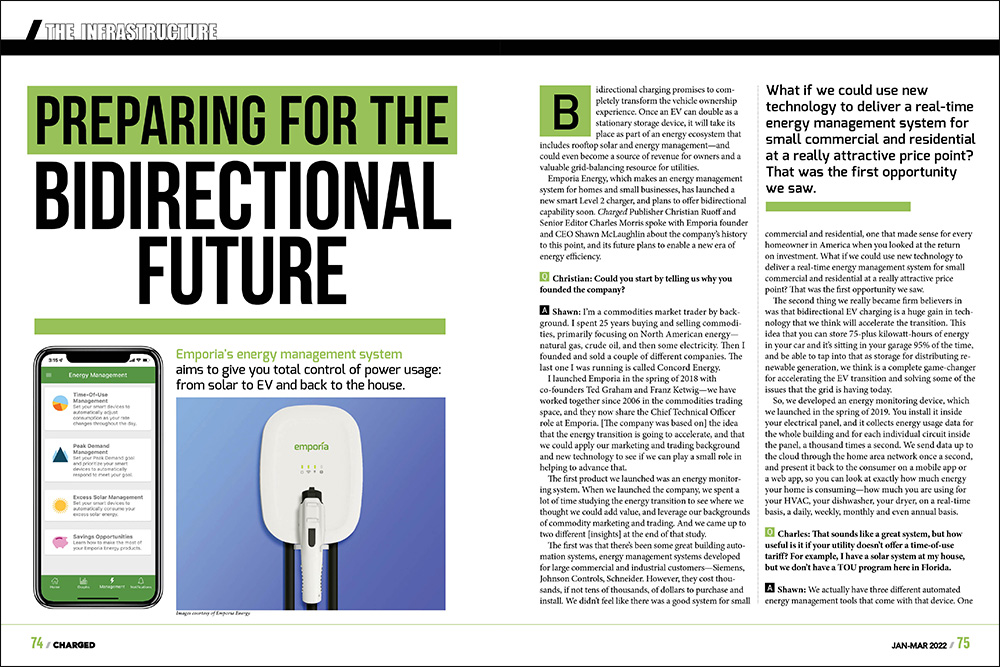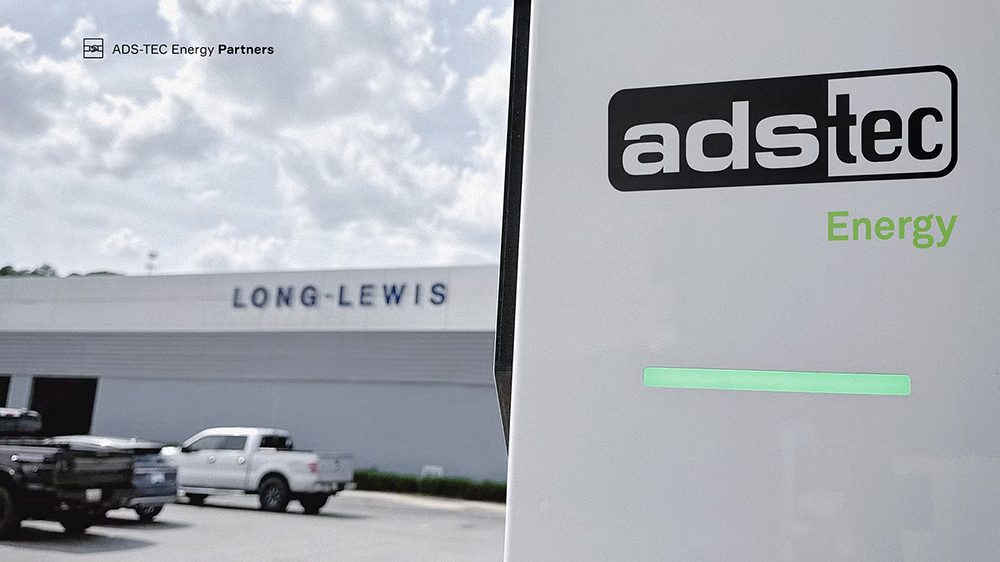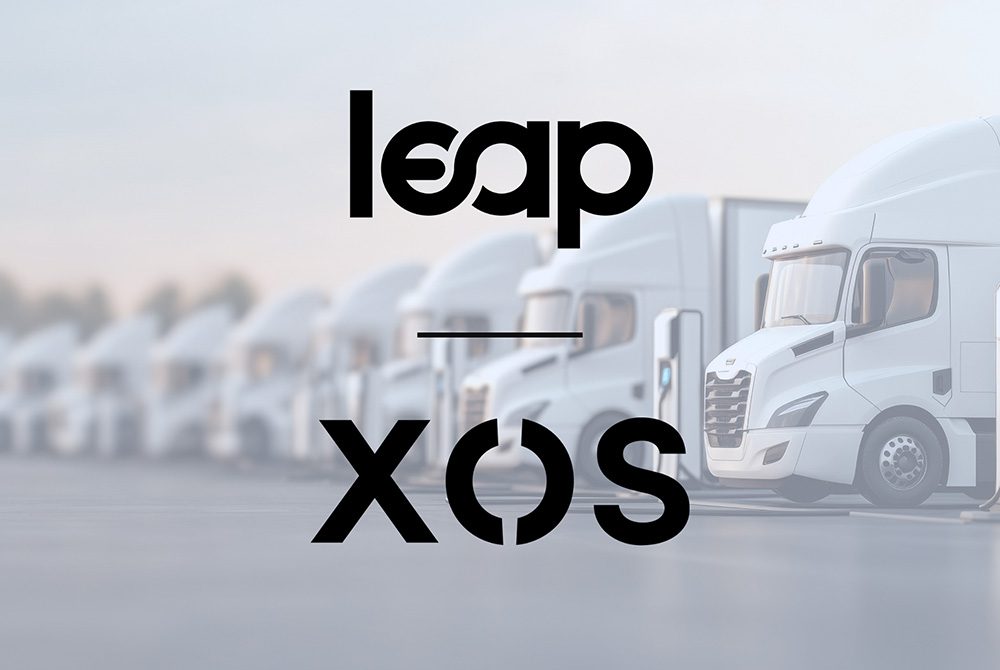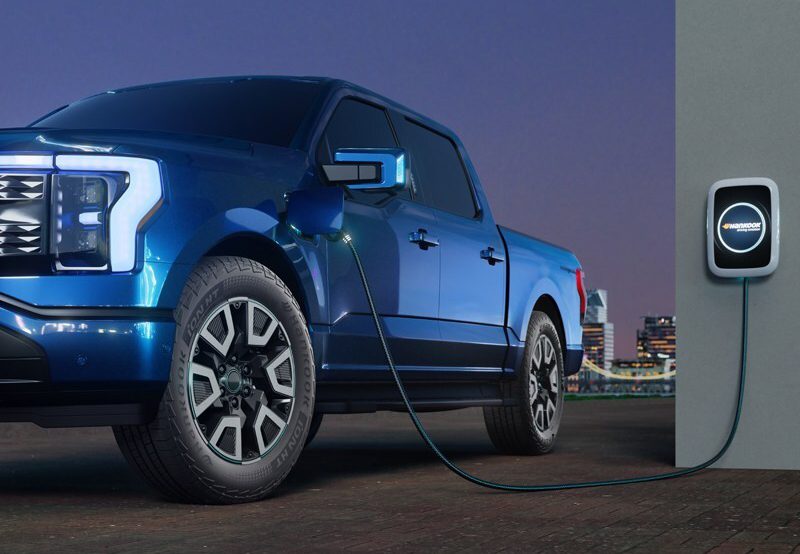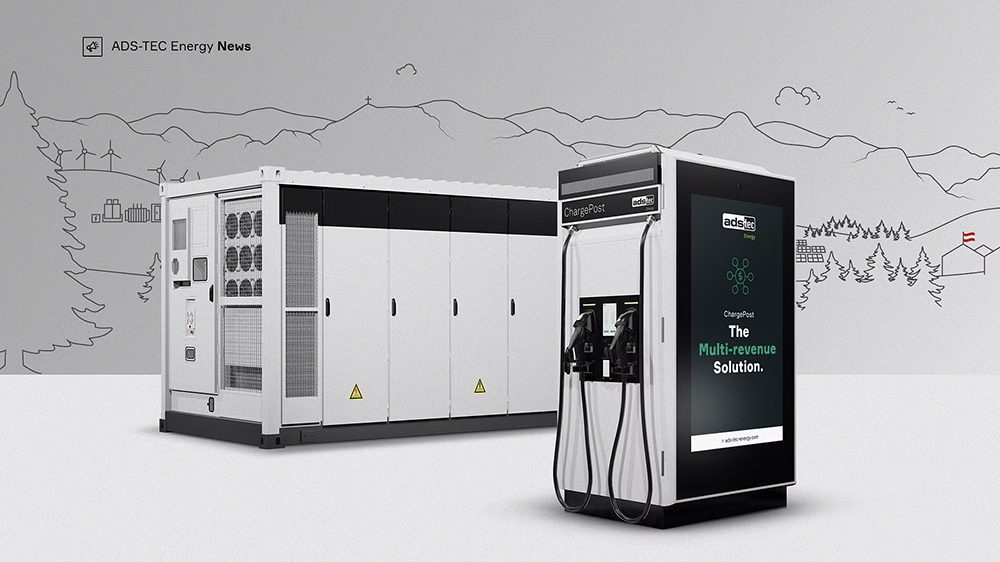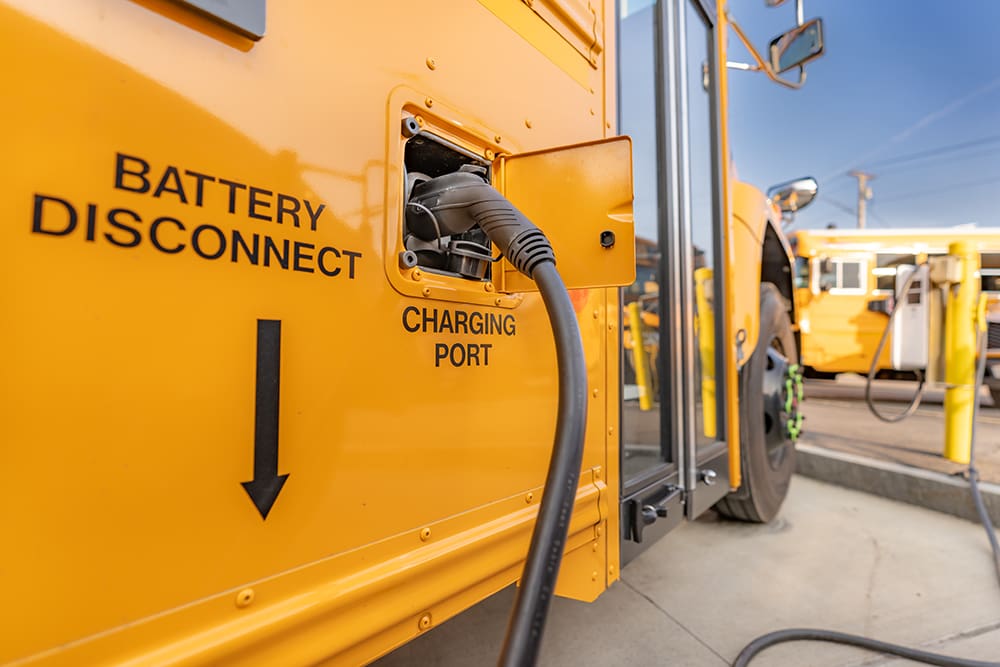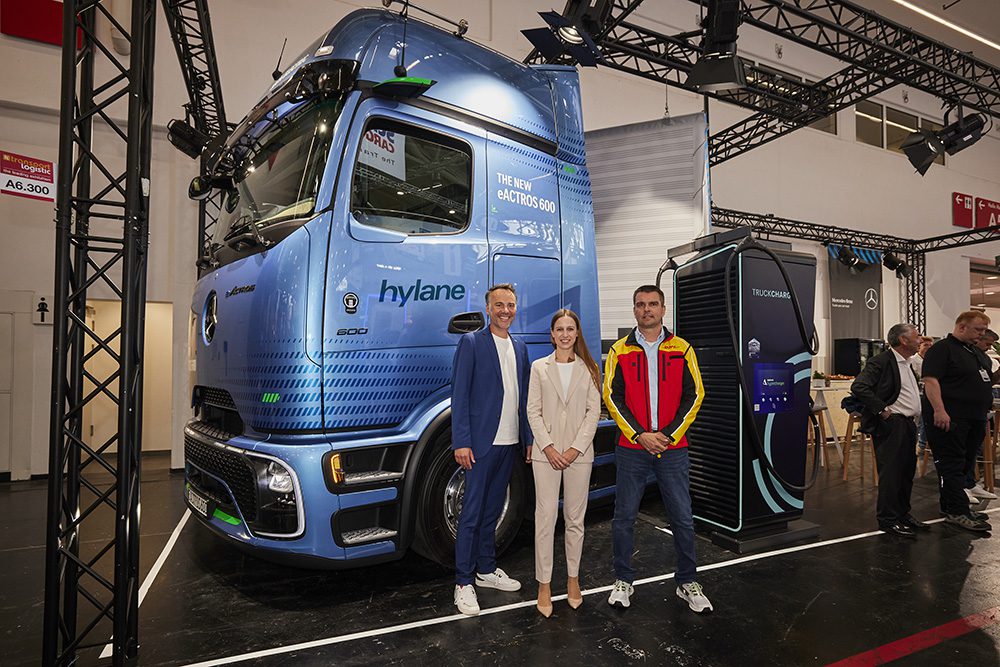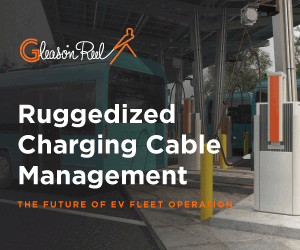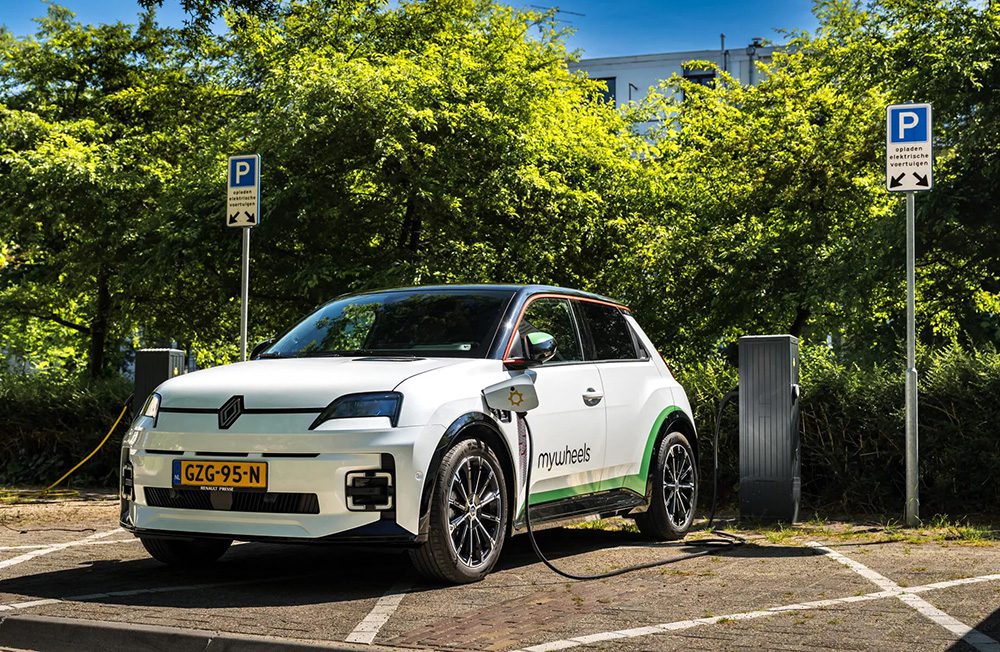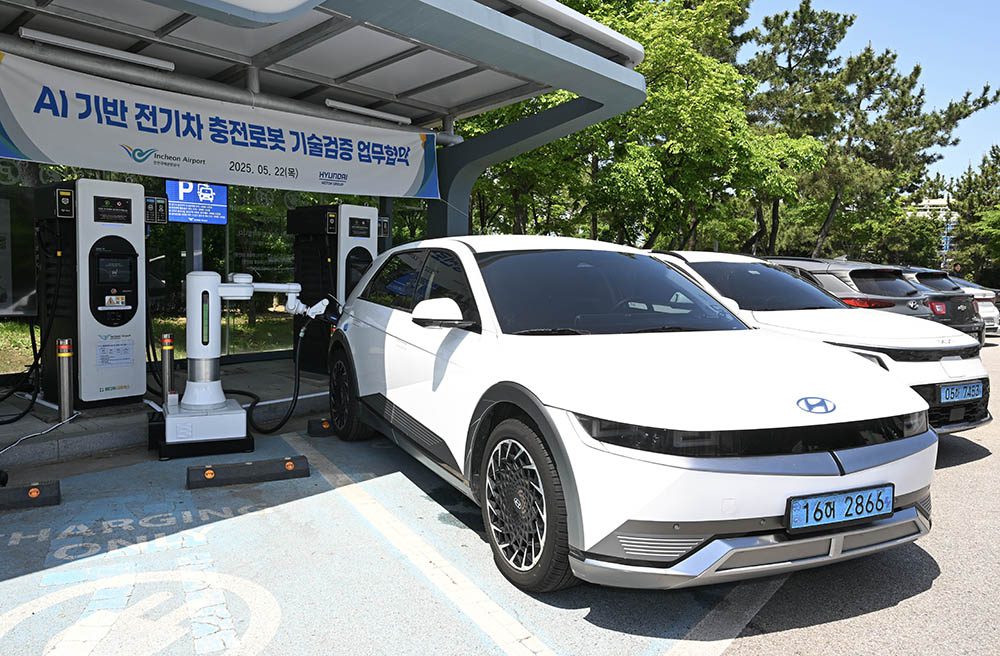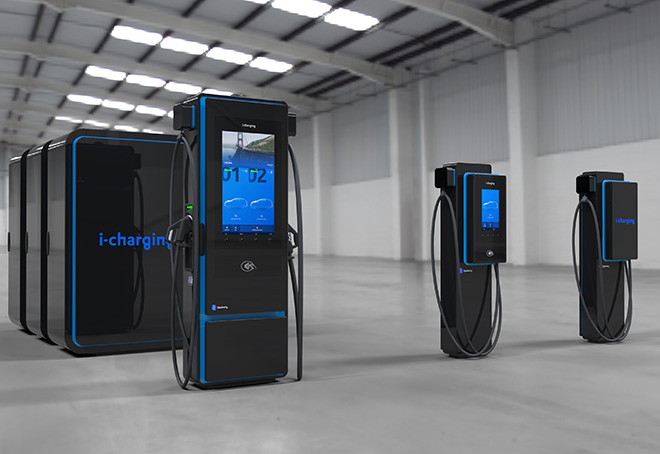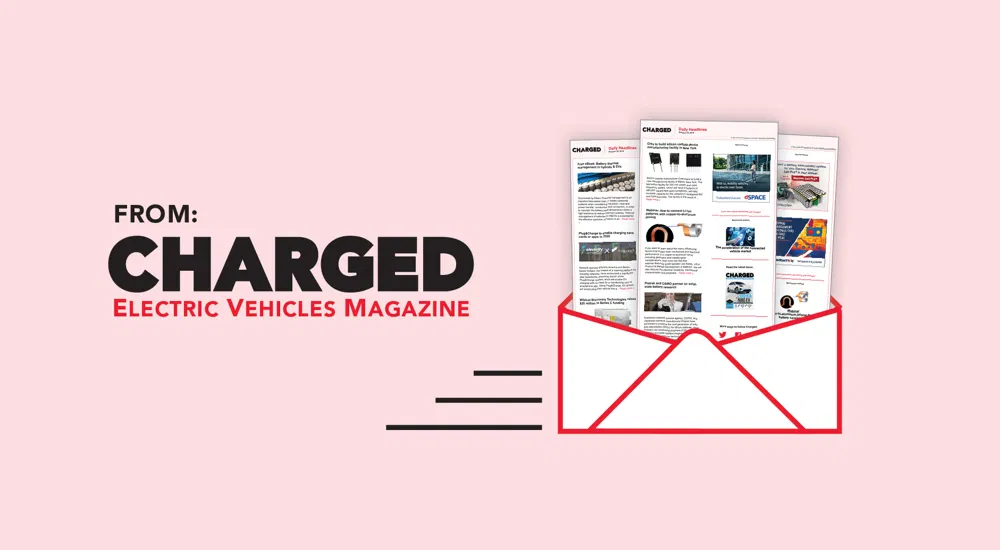Interoperability—the ability of products from different manufacturers to work together—is one of the most fundamental enablers of our technological society. From low-tech tools such as screwdrivers and wrenches to digital constructs like computer operating systems, interoperability is critical, and the lack of it is often a roadblock to the adoption of new technologies.
As EVs proliferate, and more vehicle segments electrify, the need for interoperability of charging infrastructure is coming into sharp focus, and that’s what the Charging Interface Initiative, aka CharIN, is all about.
After the proposal for the Combined Charging System (CCS) was published in Germany in 2011, a group of automakers and suppliers formed CharIN to promote the adoption of CCS. Today, the organization has grown to include over 230 members around the world, and is working to establish ever-more-powerful charging standards. The organization’s latest project is the Megawatt Charging System (MCS), a standard under development for large battery-electric vehicles, which will enable charging at power levels of up to 4.5 megawatts (3,000 amps at 1,500 volts).
CharIN recently decided to establish a North American division, in order to more effectively address local infrastructure issues. Oleg Logvinov, co-founder, President and CEO of charging technology startup IoTecha, was chosen as the new President of CharIN North America. Charged had a chat with Mr. Logvinov to learn more about CharIN’s ongoing work, and to hear some of his insights on the newest trends in charging.
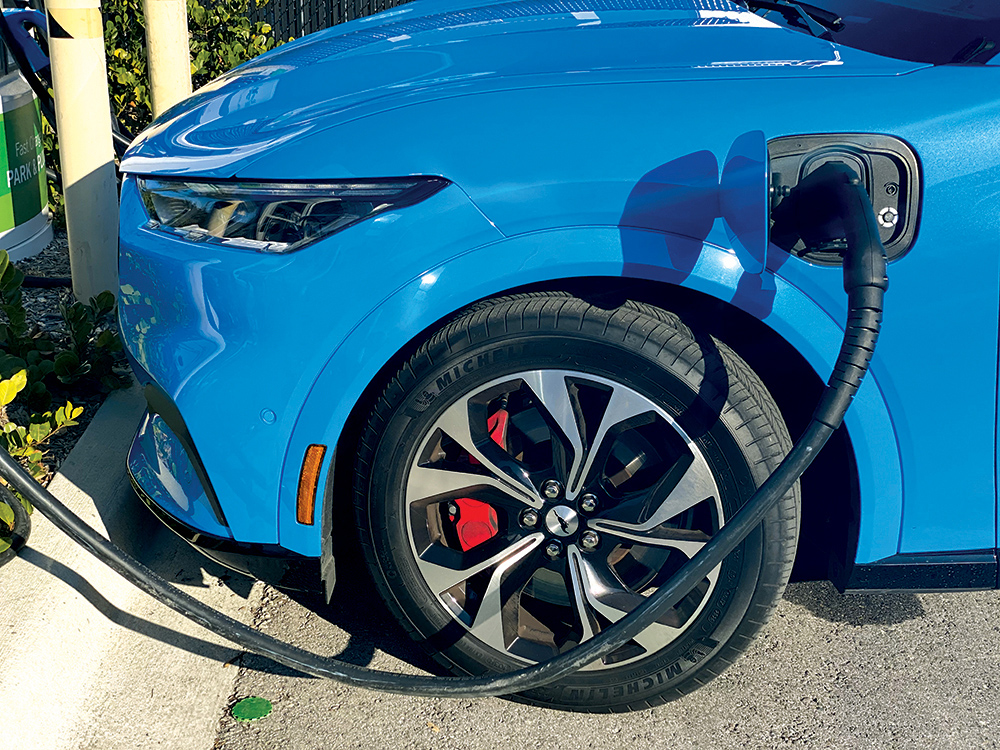
Charged: Can you give us a quick summary of CharIN’s mission?
Oleg Logvinov: The CharIN alliance was created almost six years ago with a goal of establishing CCS as a global standard for charging electric vehicles of any kind—two-wheelers, three-wheelers, passenger cars, trucks, buses, boats, aircraft, what have you. Essentially, any form of electrified transportation should have a standardized form of charging to make systems interoperable.
The CharIN alliance was created almost six years ago with a goal of establishing CCS as a global standard for charging electric vehicles of any kind.
If we go back to the days when the computing industry was just beginning, remember what Intel and Microsoft Windows made for the computing industry as an interoperable platform. [This created] industries that have grown at an exponential rate. That’s what we’re trying to accomplish with interoperable charging on a global scale for electrified transportation.
CharIN was created with this mission as an alliance of companies that are like-minded and think among the same lines. We started off as a global organization, but we understand that, while we think on a global scale and we’re creating an economy of scale with global interoperability, acting locally is very important. That’s why we decided to create our branch in the United States, to be able to apply what we have learned on a global scale, but also to help the charging infrastructure to grow here in North America.
Charged: So, CharIN North America is a new subdivision of the organization?
Oleg: It’s a part of CharIN Global, but created here with a focus on local markets, so we can combine global thinking and global technology with being able to act locally and focus on the issues that are specific to our region.
CharIN is an organization that helps to promote CCS, and if you look at the implementation guides surrounding CCS, if you look at conformance testing, interoperability testing, that’s what CharIN is about. So CharIN has been a host of testing events, testing festivals that have gone around the world now for many years. We just had one that happened in Germany and [another] in the San Francisco Bay area. [Also, CharIN’s 5th North America Conference and Testival took place at Lucid Motors Headquarters in Newark, California in November.]
We’re bringing together OEMs who produce vehicles with OEMs who produce chargers, and allowing them to test one on one with as many as possible.
The purpose of these events is very simple. If you go back to the computing industry, [making] routers and switches and computers so that every vendor could produce networking gear that could integrate with another vendor was a key element of making systems interoperable. We’re doing the same with charging infrastructure. We’re bringing together OEMs who produce vehicles with OEMs who produce chargers, and allowing them to test one on one with as many as possible.

Charged: And establishing standards within CCS?
Oleg: Well, the standard is established, but as you know, there is usually a path from a published standard to global interoperability. And that takes a while, because no matter how careful you are in writing a standard, there is always room for interpretation. And if you’re not precise to the standard, you learn [best practice] through that type of interoperability testing.
Charged: Does CharIN also have a lobbying or advocacy function? Do you work with governments on proposed policies?
Oleg: We work with governments, but we’re not a lobbyist. We’re an organization that educates, helps to understand. We have a long history of collaboration with, for example, the California Energy Commission and the US Department of Energy. We have joint efforts. In fact, in our effort to create a Megawatt Charging System—the next stage of growth of the Combined Charging System—we collaborated with both the California Energy Commission and the Department of Energy to fund the testing of potentially promising technologies in this field.
Charged: Tell us more about the Megawatt Charging System.
Oleg:The Combined Charging System is a system that spans from single-kilowatt AC all the way to 500 kilowatts DC. And now we are moving the dial towards multi-megawatt. But what unites all of those systems is the way the vehicle and the charger communicate with the other, its authentication, its use of technology. It’s how they convey the needs of one to another. It is a safety envelope and support, and having this body of experience with 500 kW systems, we’re now moving to power up while maintaining the same [method] of communication between the two.
Charged: Is High Power Charging for Commercial Vehicles (HPCCV) the same as the Megawatt Charging System (MCS), or are those two separate things?
Oleg: [They are] very different. The High Power Charging system is 500 kW, and the Megawatt Charging System is going to be multi-megawatt [up to 4.5 megawatts].
Charged: We recently spoke with a company called Rocsys [see our feature article in this issue], that has developed a robotic automated charging system. Any thoughts on automated charging?
Oleg: In my opinion as CEO and founder of IoTecha, I personally believe that it has huge promise, because automated charging actually eliminates the need to add weight and complexity to the vehicle. So from my point of view, this is something that has a fantastic potential in the market.
Charged: Do you see that as just something for fleets, heavy-duty vehicles, or could that have applications to passenger vehicles too?
Oleg: Well, absolutely. I mean, look, with the progress of technology, with robotics becoming more reliable and less expensive, why not imagine that one day you’ll have a charger hanging in the wall in your garage that simply will be able to find and plug into your vehicle when you park in your garage?
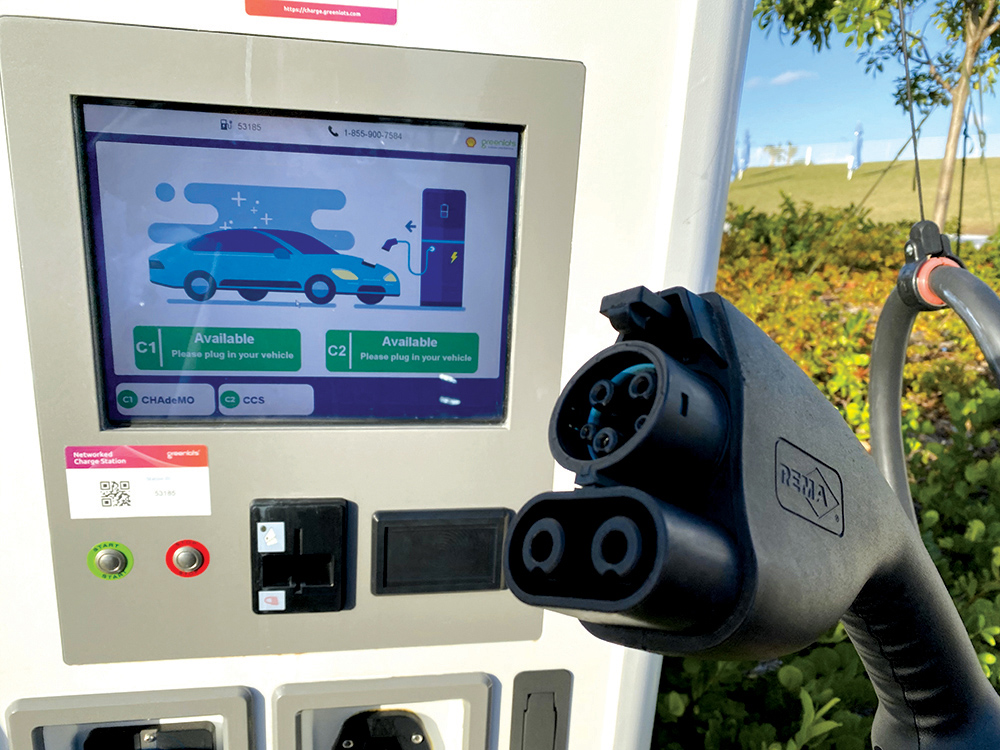
Charged: That leads into my next question. I’ve got a charging station in my driveway and it’s very convenient. But we know that there are a lot of people out there, especially those living in dense cities, who don’t have a driveway or even a parking space. Would automated charging be a partial solution for that problem?
Oleg: Well—and once again, this is the answer that I’m giving you, not as a representative of CharIN, but just as CEO of my own company—in my view, the answer is yes, because if we look at charging in general, we have to accept the fact that charging infrastructure will not be a carbon copy of ICE vehicle refueling infrastructure. Our habits will change, the way we deliver power, where we deliver power, will change.
As an example, if you park by a lighting pole in the city or on the corner where you have an advertisement kiosk, it’s very easy to imagine that there is a place for a robotic arm to find the socket in your vehicle. It’s easy to imagine that if you go to a shopping mall or you stop at the grocery store, the same can happen.
I personally believe that destination charging will take a very significant role in how we charge our vehicles. Today we go to a gas station. Why? It’s not because we want to, it’s because we have to, because that’s how the infrastructure was created. But imagine that you don’t have to use this experience of refueling your car. That’s not how you would imagine to charge your vehicle. It would be very natural for you to think, I can charge anywhere the power exists. And power exists everywhere. So, if I’m going to pick up my milk and weekly groceries, it might make sense for me to stop by and charge at the same spot. And if the charging infrastructure can find me, instead of me finding charging infrastructure, that’s fantastic.
I think charging at work, charging at destinations will be a huge component of where charging infrastructure will be deployed. I mean, charging at a gas station probably will still be a thing, but it’ll mostly be something that you do when you do long-haul trips.
Charged: What about wireless charging? Is that the future, and how far away is it?
Oleg: I think it’s a very interesting area of technology that can bring a lot of convenience. It comes with some issues that I think need to be addressed: additional weight that you have to add to the vehicle; and additional costs associated with evacuating all of this heat that is created by the power transfer. Something needs to be done about that. I’m cautiously optimistic. I think there are ways to overcome that, but I’m not sure how quickly and how soon that will be available to all of us. And in fact, automated charging will be competitive too [because] that doesn’t require us to add anything to the vehicle.
Charged: Any thoughts on the new federal infrastructure bill? Obviously, they want to promote public charging, but there are different ways they can go about it. Do you have any thoughts on what public policy has gotten right or wrong in the past?
Oleg: Well, I would like to focus on positives, and the positive that I saw in the draft of the bill is that money is going to be directed to connected, smart and interoperable infrastructure. I think those three words resonate very well with our mission. Without connectivity, you cannot really integrate transportation with the power grid. It’s a must. And if we can promote interoperable, smart and connected charging infrastructure, we’ll achieve a lot. I think there was a very good thought process that led to those words. It was very encouraging for all of us to read, and I sincerely hope that as this bill is evolving, those three words will remain a part of it.
The positive that I saw in the draft of the bill is that money is going to be directed to connected, smart and interoperable infrastructure. I think those three words resonate very well with our mission.
Charged: I was just speaking to someone at the Environmental Defense Fund about charging large, heavy-duty vehicle fleets. We know that in California, they have a pretty strong incentive program to try to help companies pay some of the upfront costs, and she told me that there’s a bill on the table in New Jersey to do something like that. Are you aware of any other states that are working on that sort of thing?
Oleg: I think there are a lot of discussions in this area pretty much everywhere, because if you look at heavy-duty transportation, it is a very significant contributor to greenhouse gas emissions. Changing that with electrified transportation will help a lot, so there are a lot of activities, not only in a number of states, but also across the globe.
It’s not just heavy-duty trucks—we’re also talking about boats, we’re talking about ferries, we’re talking about aircraft. All of those efforts have the potential of reducing our pollution by a quite substantial share. And by the way, also helping to minimize the cost. Because if you look at the analysis of what an electrified aircraft can do in comparison with your typical fossil-fuel aircraft, the operational savings are incredible, which could be very beneficial to all of us consumers.
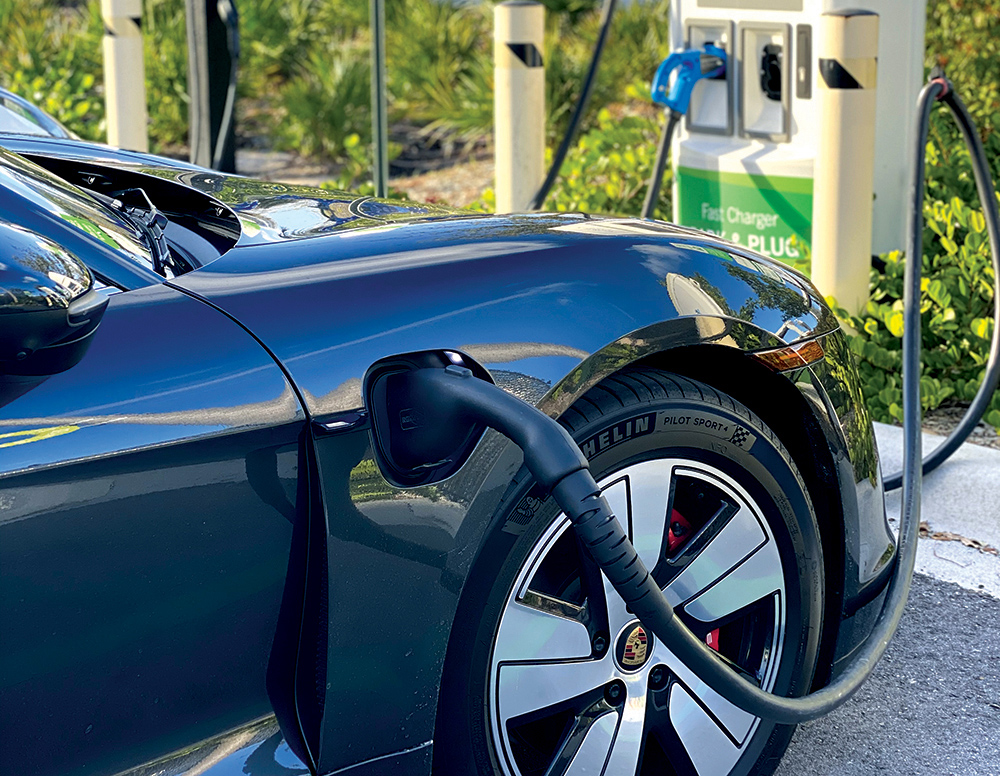
Charged: We’ve been writing a lot lately about companies that provide turnkey charging solutions for commercial fleets. The story we hear again and again is that a company buys some electric trucks and some chargers, but soon realizes that it’s much more complicated than they thought, so they look for help from companies like In-Charge and AMPLY Power. Is CharIN involved in that sort of thing?
Oleg: CharIN is not involved in creating a fleet solution, because our focus is a combined charging system. And of course, CCS helps companies like AMPLY and In-Charge to deploy their solutions, because it’s based on the same standard. They can actually go and buy equipment from multiple vendors, put it together and it works. That’s where interoperability creates an opportunity—you can select pieces that you feel are the best and put them together, and you’re guaranteed that they will work together as a very seamless system.
I think what the [companies] like AMPLY and In-Charge are doing are wonderful efforts because, in order to transition to electrified transportation, we need to eliminate the barrier for entry, and creating that type of platform that gives you all in one package is something that, for fleet operators, simplifies their life. So this is a very viable effort, and I’m delighted to see that all of those efforts are fueled by the interoperability of CCS.
Charged: Tell me about your company. What does IoTecha do?
Oleg: Our company is about six years old. We were born here in New Jersey as a spinoff from STMicroelectronics, which is one of the large semiconductor companies. Have you ever heard about power-line communication technology? If you look at CCS and the communication link between the vehicle and the charger, it’s based on power-line communication technology [a system that enables data to be carried on a conductor that also carries AC electric power].
I and my team were part of the industries that created power-line communication technology. We were a startup company, and we sold our technology to STMicroelectronics, who produced it cheap. And as we were doing that, we started working with a lot of OEMs helping them to create a combined charging system. By 2015, it became apparent to us that the electrification of transportation would explode. And what we realized back then is that the industry needed somebody who can step in, very much like you just said about AMPLY and In-Charge. The same is applicable to those who try to build chargers. It’s not a simple feat, because you need to bring communication, power, networking, many disciplines into the same box.
We said, “Okay, we have expertise creating fundamental building-block communication technology. Why not become a company that enables charging manufacturers, CPOs [charge point operators], utility companies, to build charging infrastructure with very little effort?” So we created what you can call a motherboard plus operating system for the charger, AC or DC. And that’s how IoTecha was born in 2016.
Today we’re a very quiet company, we don’t advertise much, we work exclusively B2B. We build chargers for our customers, and we provide them with building blocks. They can come to us and buy a single building block, or ask us to build a branded product and we’ll deliver it to them together with the cloud services that help them to integrate those into the building infrastructure and energy platform or integrate it into the grid and do everything with a very, very minimum investment from their side.
Charged: That has a lot to do with interoperability and standards.
Oleg: Absolutely. And that’s why I decided to take this volunteer position with CharIN, because I believe that interoperability creates economies of scale and grows massive ecosystems. And that’s what creates great markets, like the internet.
Charged: What about the Plug & Charge standard? That’s something CharIN is involved with too, I believe.
Oleg: It’s a part of CCS. We heavily support it. I believe it has enormous potential for consumers as well as fleets. It automates the process of authentication of the vehicle at the charging station, so you get two benefits. Number one, you get secured authentication. Number two, you actually get an awareness of which vehicle is plugged in where on the electrical grid.
Not only do you have the convenience of eliminating human interaction…but [with Plug & Charge] you’re also creating an opportunity to understand which vehicle is plugged in where, and what are the energy demands.
So, not only do you have the convenience of eliminating human interaction during the authentication process—you don’t need a credit card, you don’t need [an app or RFID key]—but you’re also creating an opportunity to understand which vehicle is plugged in where, and what are the energy demands. And now you can talk about how to do grid-scale management with the help of all of those vehicles.
Charged: So it’s not just about convenience for the driver, it’s also about providing more information to the grid.
Oleg:It’s about the powers of information and automating this process. We’re not leaving it to a consumer or to the driver of a commercial vehicle to provide their vehicle ID. It all happens automatically, and that opens the door for a lot of services that can be created on top of it.
Charged: Is that something that’s already being implemented now?
Oleg: Yes. Electrify America supports Plug & Charge, and vehicles such as the Lucid Air, Porsche Taycan and Ford Mach-E were tested with full interoperability of Plug & Charge.
Charged: What are your thoughts on V2G or V2X?
Oleg: It’s a very viable technology. It’s a very important technology for many reasons. Think about the future—when vehicles plug into the grid, you don’t need to do anything. They can communicate their capabilities and become an energy source without us even thinking about it. You can actually use all of the vehicles connected to the grid as a generation source on the grid-scale level.
Charged: So Plug & Charge kind of enables V2G applications?
Oleg: I wouldn’t say enables, but it’s a tremendously helpful companion. We supported V2G and Plug & Charge out of the gate. In fact, together with Lucid, we [did] a demonstration two years ago, when we demonstrated that a vehicle plugged in during office hours at work can generate over $5,000 worth of benefit [per year], simply because of the rate arbitrage. If you think about it, it’s a game-changer. Normally we use a passenger car as a depreciating resource.
Charged: Also known as a money pit.
Oleg: Exactly. And now all of a sudden it throws off $5,000 every year. It is a different economic framework.
This article appeared in Issue 57 – Sept/Oct 2021 – Subscribe now.
